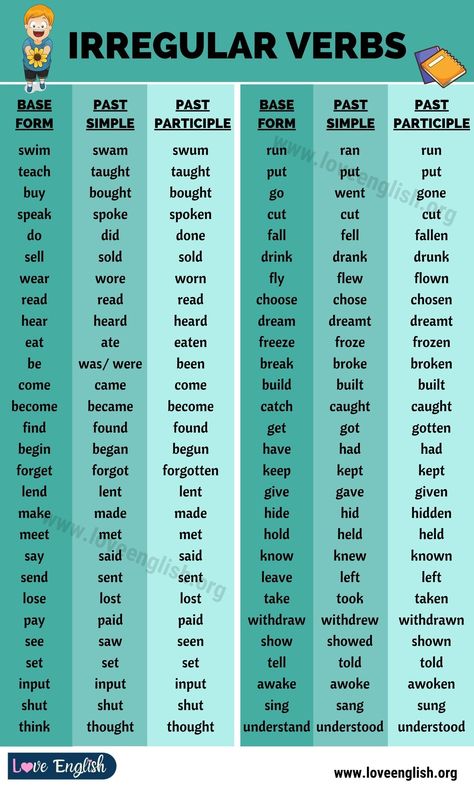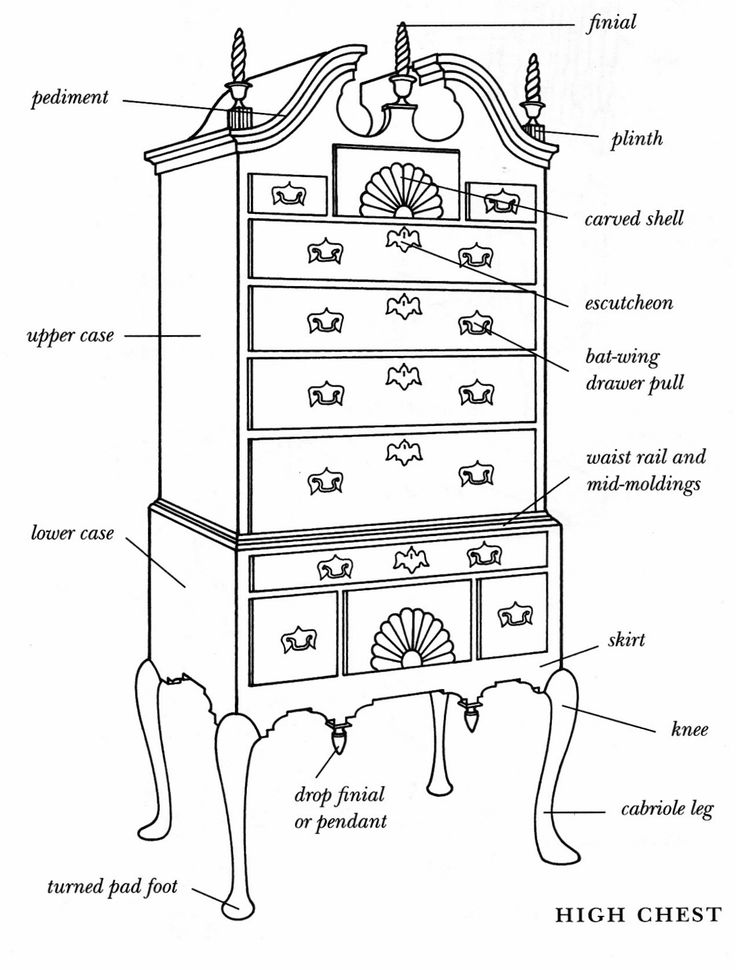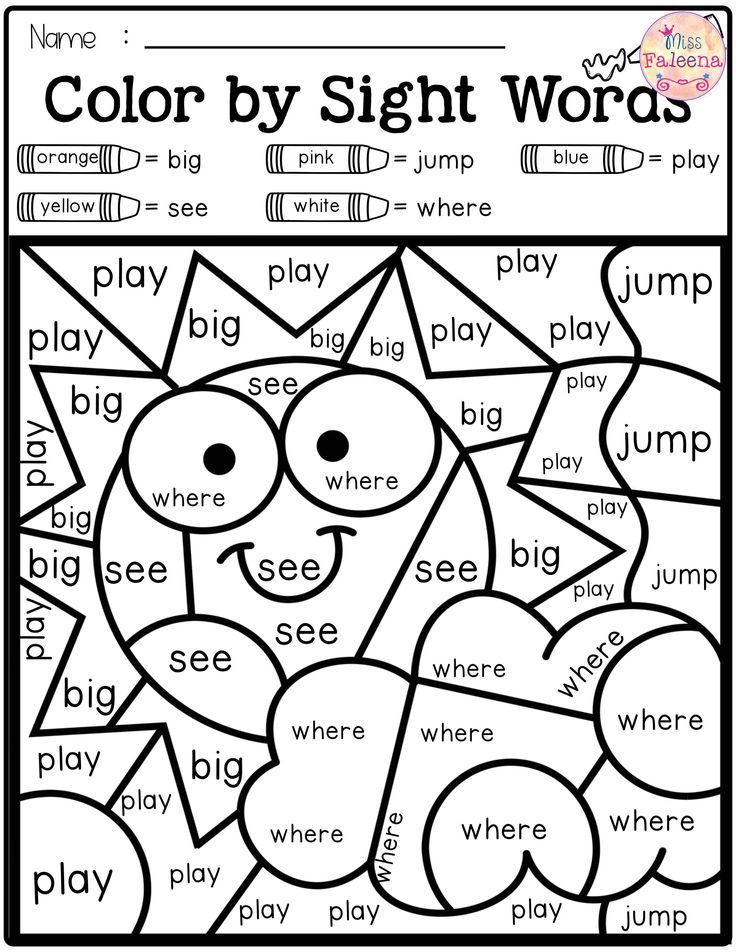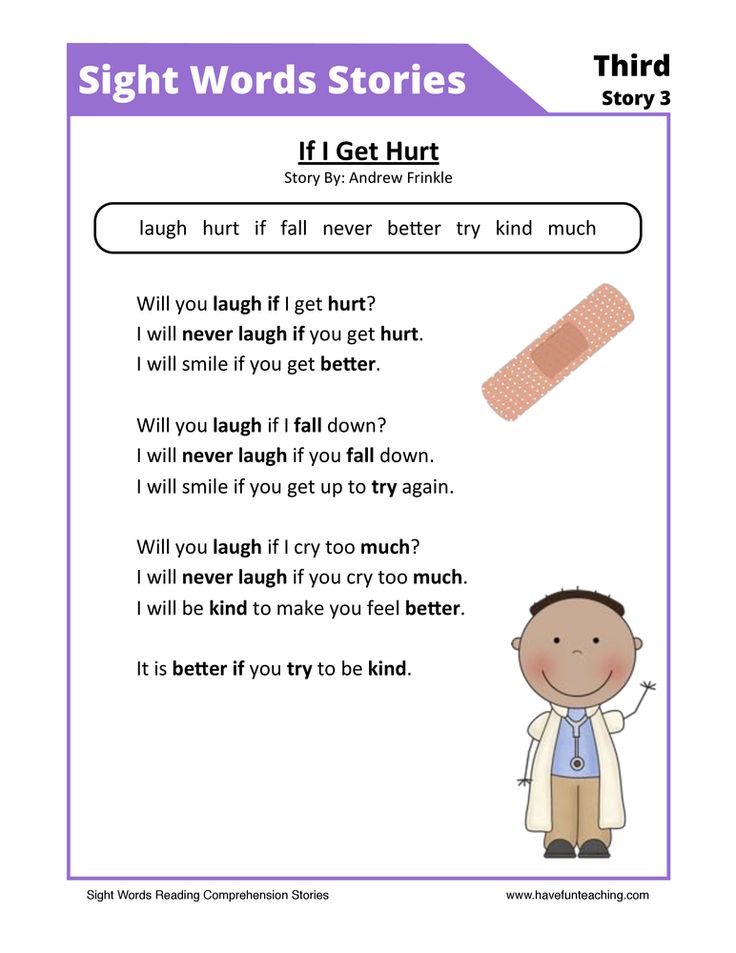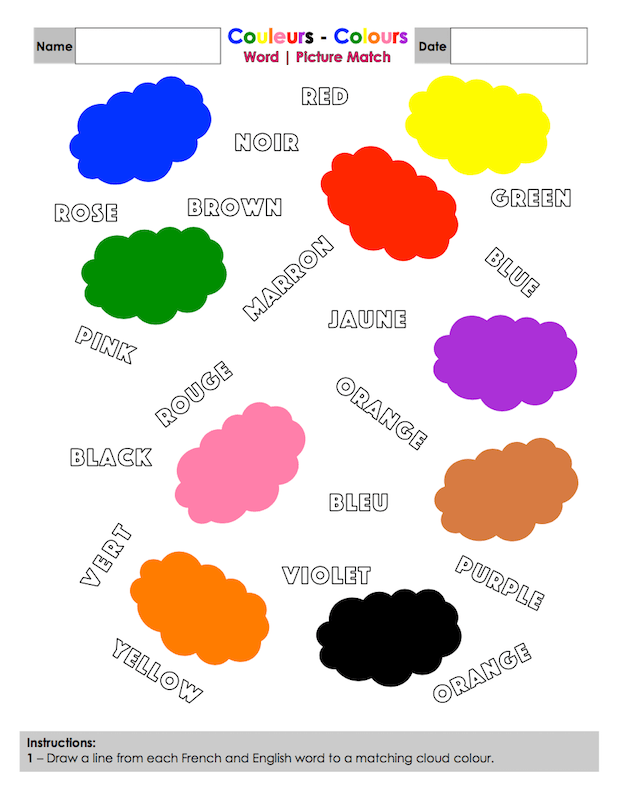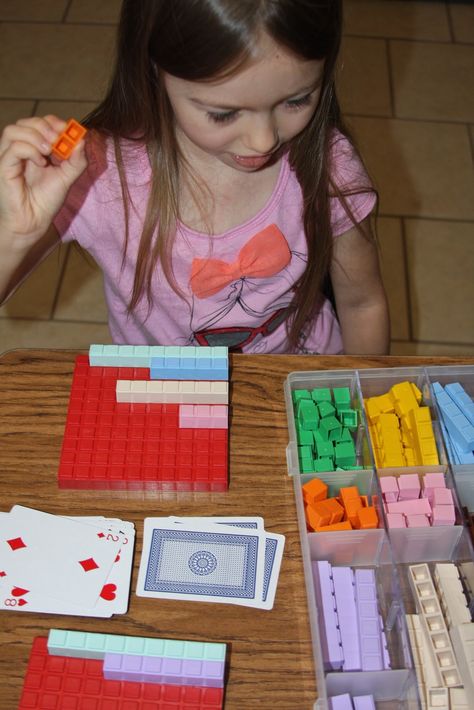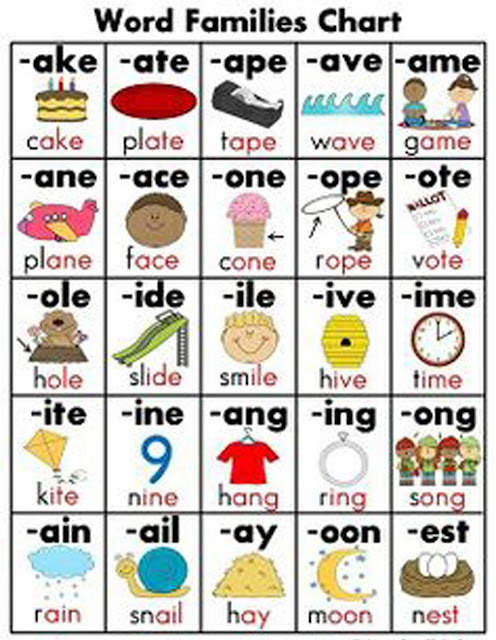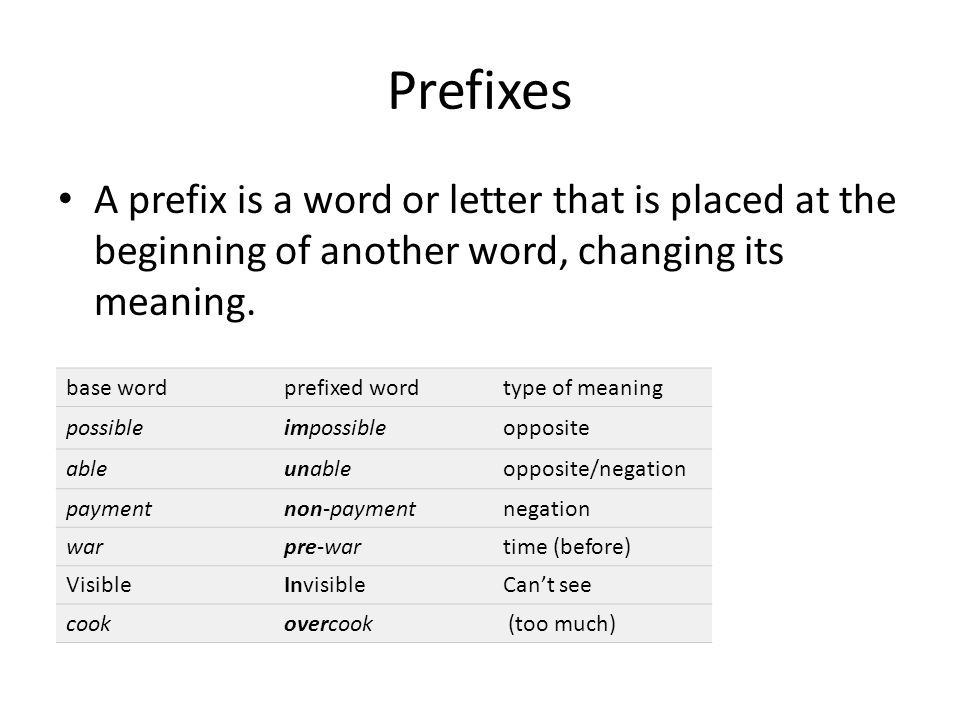Verb be list
To be verbs completely explained
How to use
“to be” verbsAre you confused by “to be” verbs? It’s okay. “To be” verbs change almost more than any other verb. In other words, they are very irregular. Let’s learn how to use “to be” verbs correctly. Refer back to this lesson when you have questions about how to use them in the future.
What are “to be” verbs?
“To be” verbs are: are, am, is, was, were, been and being. They are used to describe or tell us the condition of people, things, places and ideas. For example, they could tell us the subject’s age, nationality, job or other traits.
Forms of “
To be” by tense. There are many English tenses, but the main ones you will use are present, past, present progressive and present perfect
The correct “to be” verb to use depends on your subject and tense. This chart shows you proper subject verb agreement with “to be” verbs.
Note: Contractions are short forms that will sound more like how people speak.
Feel free to print this out for reference.
These are examples of how you will see “to be” verbs most often.
“To be” verbs in positive present tense sentences
I am American.
He is a teacher.
She is happy.
They are at the movies.
“To be” verbs in negative present tense sentences
I am not angry.
She is not at school.
It is not broken.
We are not students.
“To be” verbs in affirmative past tense sentences
I was hungry.
She was at the movies.
You were there.
It was great!.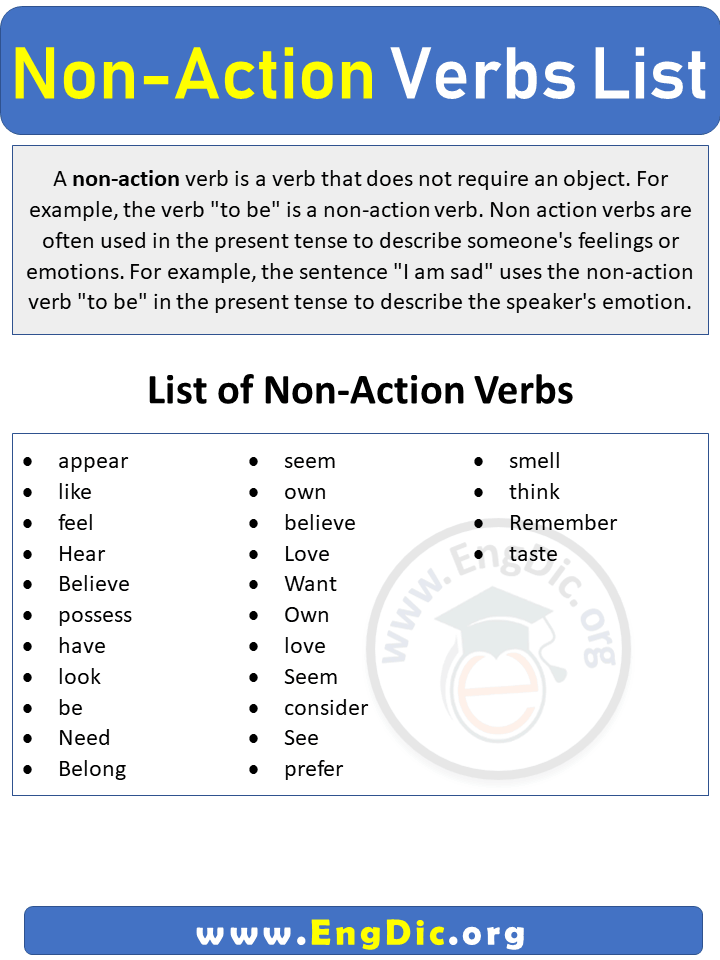
They were excited.
“To be” verbs in negative past tense sentences
I was not there.
You were not here.
He wasn’t a teacher.
We weren’t at the restaurant.
Questions using “to be” verbs
To make questions with be verbs, use this order: To be verb + subject + complement
Was I there?
Were you sad?
Was she at school?
Was it a good movie?
Were they late?
Advanced SectionThe previous section contained examples of what most beginners need to learn for using “to be” verbs correctly. In this section, we’ll be covering many other ways to use them.
The
present perfect formThe present perfect form is used for describing experiences or events that have happened in the past when the exact time is not important.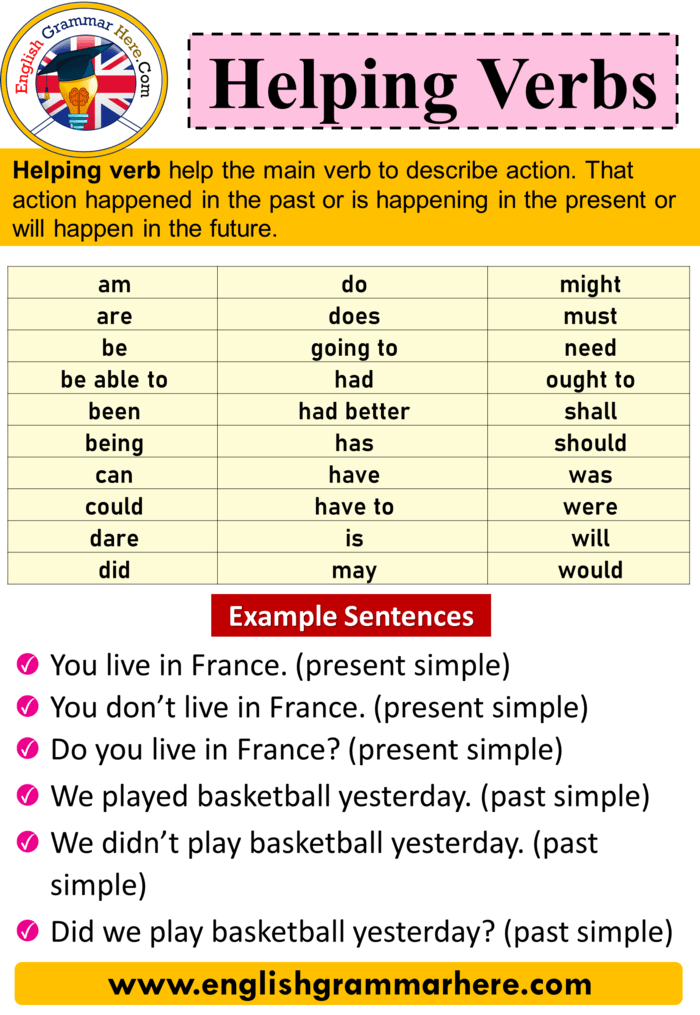
It uses this structure: subject + has/have + been + complement
Examples:
I have been there.
You have been good.
It has been difficult.
He has been an electrician.
We have been here all day.
They have been well-behaved.
Asking
questions using the present perfect form.Questions in the present perfect perform form use the structure: Has/have + subject + been + complement
Examples:
Have I been mean?
Have you been worried?
Has he been there?
Have they been anxious?
The
Present Progressive FormThe present progressive form is for describing continuous or ongoing actions happening right now vs the simple present which describes habits or things which happen now and again.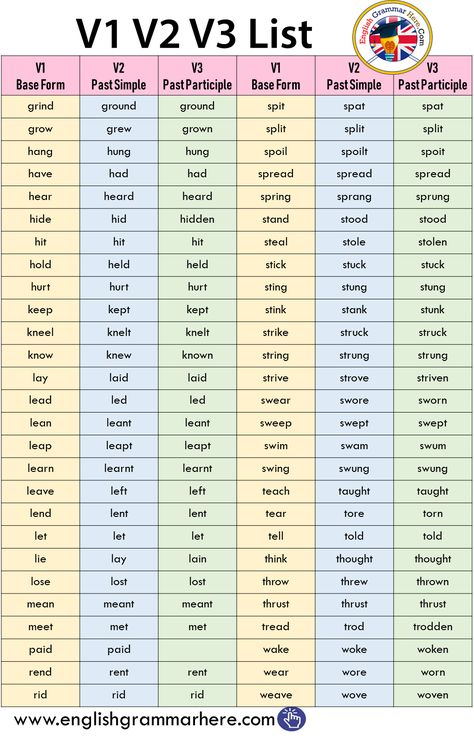
Use this structure for the present progressive tense for “to be” verbs:
Subject + be verb + verb + ing
Examples:
I am watching television.
You are pushing the wrong button.
He is looking at the window.
She is studying.
It is raining.
We are traveling.
They are thinking.
Question tags using “to be” verbs
You can add a question tag to the end of a statement to turn it into a question. To put question tags onto sentences using “to be” verbs, use this structure:
statement + “to be” verb + pronoun. The “to be” verb used in the question tag must be the same one used in the statement.
Note: When adding question tags, if the “to be” verb in the statement is positive, then the one in the question tag must be negative. If the “to be” verb statement is negative, the one in the question tag, must be positive.
If the “to be” verb statement is negative, the one in the question tag, must be positive.
Just think:
Examples:
I wasn’t being rude, was I? (negative statement with positive question tag)
It was good, wasn’t it? (positive statement with negative question tag)
You were there, weren’t you? (positive statement with negative question tag)
It wasn’t too bad, was it? (negative question tag with positive question tag)
They weren’t angry, were they? (negative statement with positive question tag)
The
linking “To be” verb (descriptions)The linking “to be” verb describes the condition of the subject. Below are a few sentence structures using the linking “to be” verbs.
In statements that describe, you’ll see this structure in which the sentences have a “to be” verb linking the subject to a subject complement or adjective complement:
Subject + “to be” verb + complement
Examples:
I am excited.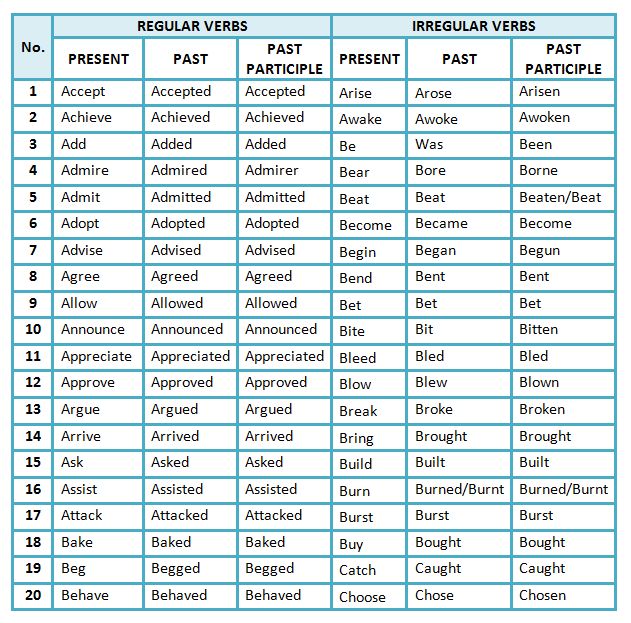
It is boring.
She is the leader.
They are at the bank.
Sometimes when answering a question you can see just a subject and “to be” verb used as in this structure:
subject + “to be” verb
Examples:
Q: Are you the doctor?
A: I am.
Q: Is she the teacher?
A: She is.
Adding
adverbs to your sentences with linking “to be” verbsReminder: Adverbs modify verbs, adjectives and other adverbs in order to tell us how, when, where, why, how often or to what extent
Structure: Subject + “to be” verb + adverb +complement or
Adverb, subject + “to be” verb + complement
Examples:
I am always on time.
It is never boring.
Sometimes, it is difficult.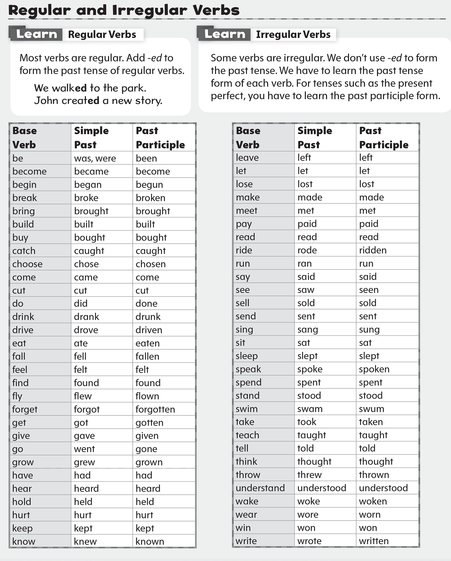
“
To be” verbs for discussing possibility or giving suggestionsWhen describing possibilities you’ll typically use the following structure:
Subject + modal verb (could, should, would, might etc) + be + complement
Note: “be” stays in this base form directly after a modal verb.
Examples:
He could be a superstar.
She might be late.
You should be nice to your parents.
When giving suggestions, it is a little more complicated.
Examples:
subject + modal verb (suggest)+ object + be + complement
subject + modal verb (advise)+ object + to be + complement
I suggest you be nice to your mother.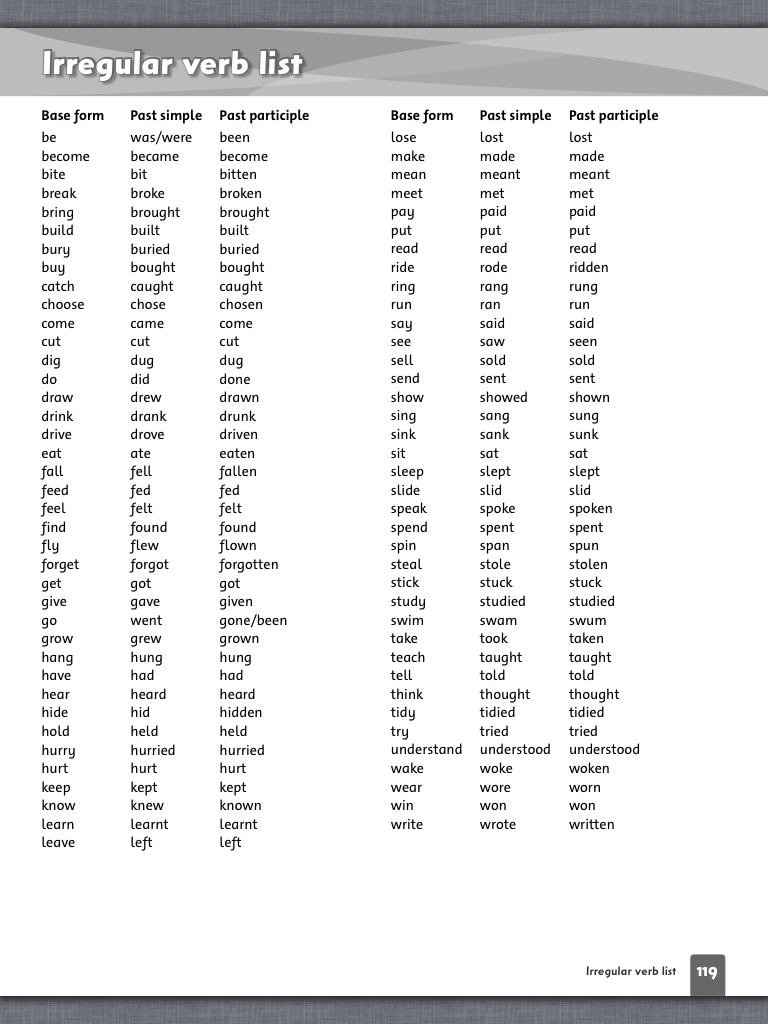
I advise you to be cooperative.
Imperatives: giving commands using “to be” verbsWhen giving imperatives or commands, “to be” verbs stay in the base form of be and typically stay at the beginning of the sentence. In these sentences, the subject is implied so it doesn’t have to be written, that is why you only see the “to be” verb followed by the complement.
Structure: “to be” verb + complement or
Do not + “to be” verb + complement
Examples:
Be a good student.
Be nice to your teacher.
Don’t be mean to him.
When to use “
to be” verbs as infinitives.Infinitives are to plus a verb in order to make a noun.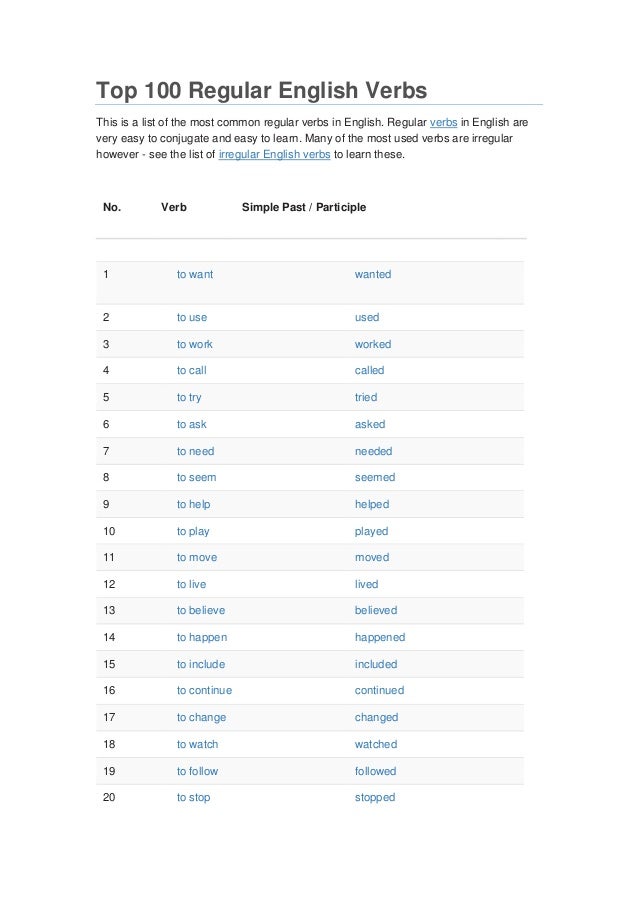 So you’ll see them in the subject or object of a sentence. They are used to describe the abstract, so they most often are used with a modal verb of desire.
So you’ll see them in the subject or object of a sentence. They are used to describe the abstract, so they most often are used with a modal verb of desire.
I want to be a singer.
He likes to be the best at what he does.
They hope to be friends.
When making these negative, you’ll put do not or does not before the modal verb.
Examples:
Note: following don’t or doesn’t modal verbs such as like, want, need, or hope will stay in base form.
I don’t want to be difficult.
He does not like to be mean.
She doesn’t want to be a musician.
The
passive voice using “to be” verbsIn sentences using the passive voice, the person or thing which is performing the action is either in the object of the sentence or even omitted. When written, the noun performing the action is normally found following a preposition such as “by”
When written, the noun performing the action is normally found following a preposition such as “by”
The most common passive voice construction is this:
Subject + “to be” verb + verb or
Subject + “to be” verb + verb + by + object
In these constructions, the “to be” verb will follow the standard rules for subject verb agreement. The examples below have sentences using “to be” verbs in different tenses.
Examples:
Present: The car is powered by electricity.
Present progressive: The work is being done.
Past: The building was demolished by the crew.
Future: The meal will be prepared by the chef.
Present perfect: The coffee had been made.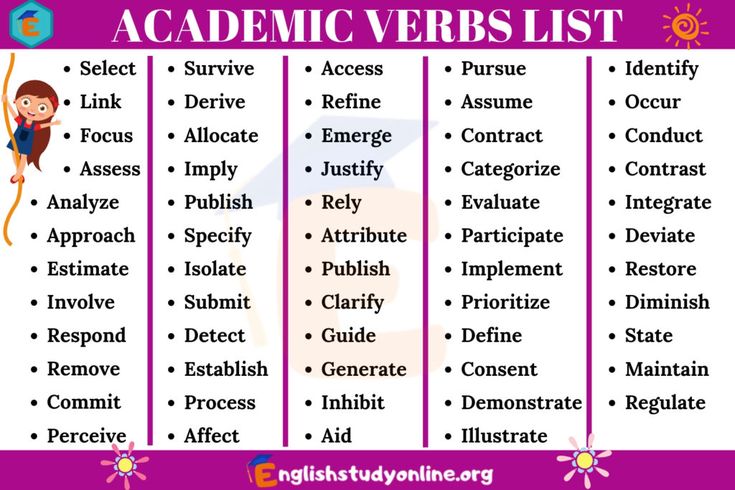
We have covered many ways in which you can use “to be” verbs. Follow our blog for more lessons like this one. Also, if you would like to find out more about studying English online or in the United States, contact us here. FLS International offers live online classes, in-person classes, cultural tours and more!
Written by: Welkin Tang
Comprehensive list of verbs with examples
3.4
(1258)
Looking for a verbs list? Fret not. Here’s a quick guide on the list of verbs with illustrative examples. But before we get down to the list of verbs, let’s quickly brush through the definition of a verb.
A verb in the simplest sense is a word that describes an action, an event or a state. It tells you what the subject of a sentence is doing. The verbs (like those in the verb list below) are usually the main words in a sentence and without them a sentence is incomplete. Having said that, how do you recognize a verb in a sentence?
Well, verbs (like those in the verbs list below) are typically used after a noun or a pronoun.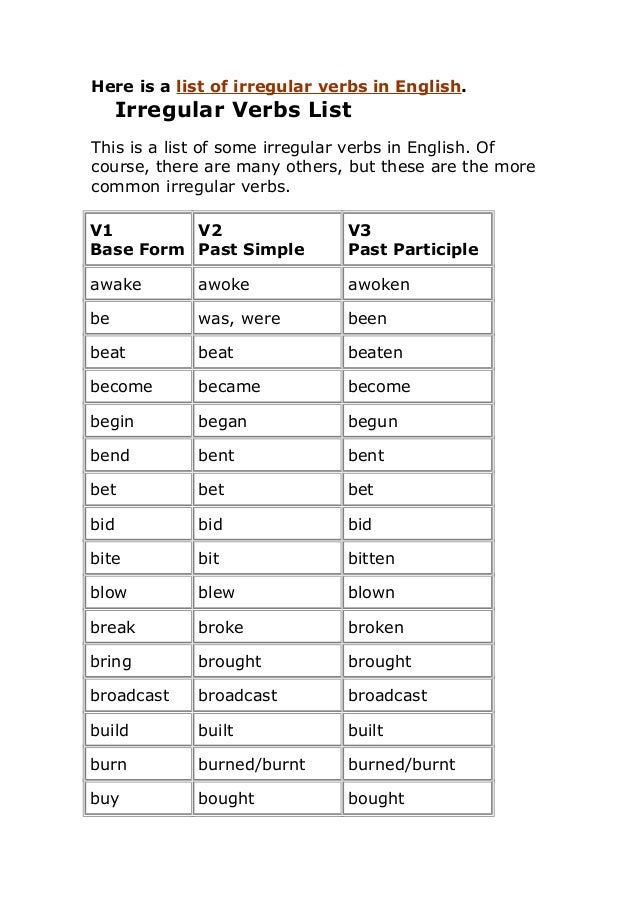 The nouns or pronouns in such cases, are referred to as subjects.
The nouns or pronouns in such cases, are referred to as subjects.
For example:
- Anthony went to the market.
In this case the action of Anthony physically having went to the market is the verb.
In this guide, verbs are categorized into a few different lists:
- action verbs list
- linking verbs list
- helping verbs list
- irregular verbs list
Except for the linking verb list, the other categories break down into different types. The next list of verbs can be physical or mental. The list of helping verbs can be auxiliary or modal. The list of irregular verbs shows verbs in different tenses.
Learning the words in each verb list can help you develop your English-speaking skills. To make comprehension easier, example sentences have been provided in the verb list sections.
List of Action Verbs
In an action verbs list, each verb can be used to state a subject’s action in a sentence.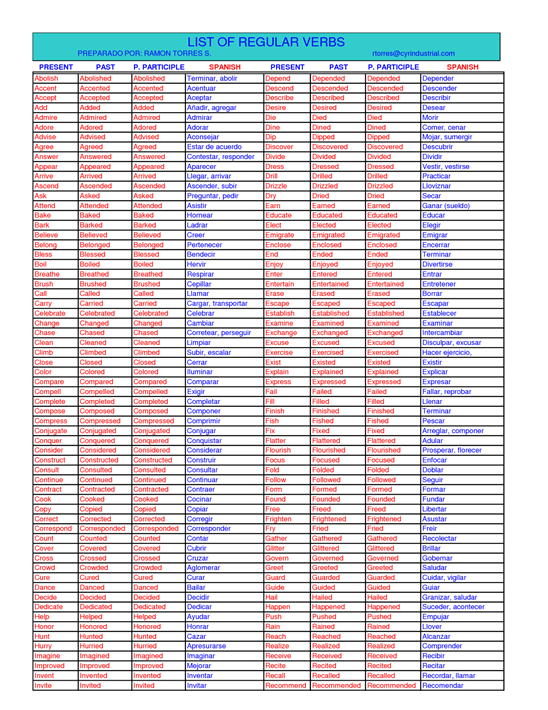 There are two types of action words you’ll find in this list of action verbs.
There are two types of action words you’ll find in this list of action verbs.
The physical verb list features action words. In other words, the words within a physical action verb list usually describe an action that someone or something physically does. In a nutshell, a particular motion made using one’s body or a tool to complete an action is referred to as an action verb. For example, let’s start with a short list of action verbs:
- Walk
- Open
- Speak
All of the words on this short action verb list describe physical actions. The verb list below is a much longer list of action verbs that are useful to know.
Physical Action Verb List:| Act | Answer | Approve | Arrange |
| Break | Build | Buy | Coach |
| Color | Cough | Create | Complete |
| Cry | Dance | Describe | Draw |
| Drink | Eat | Edit | Enter |
| Exit | Imitate | Invent | Jump |
| Laugh | Lie | Listen | Paint |
| Plan | Play | Read | Replace |
| Run | Scream | See | Shop |
| Shout | Sing | Skip | Sleep |
| Sneeze | Solve | Study | Teach |
| Touch | Turn | Walk | Win |
| Write | Whistle | Yank | Zip |
Hopefully you already recognized a few (or all) of the words on this action verbs list.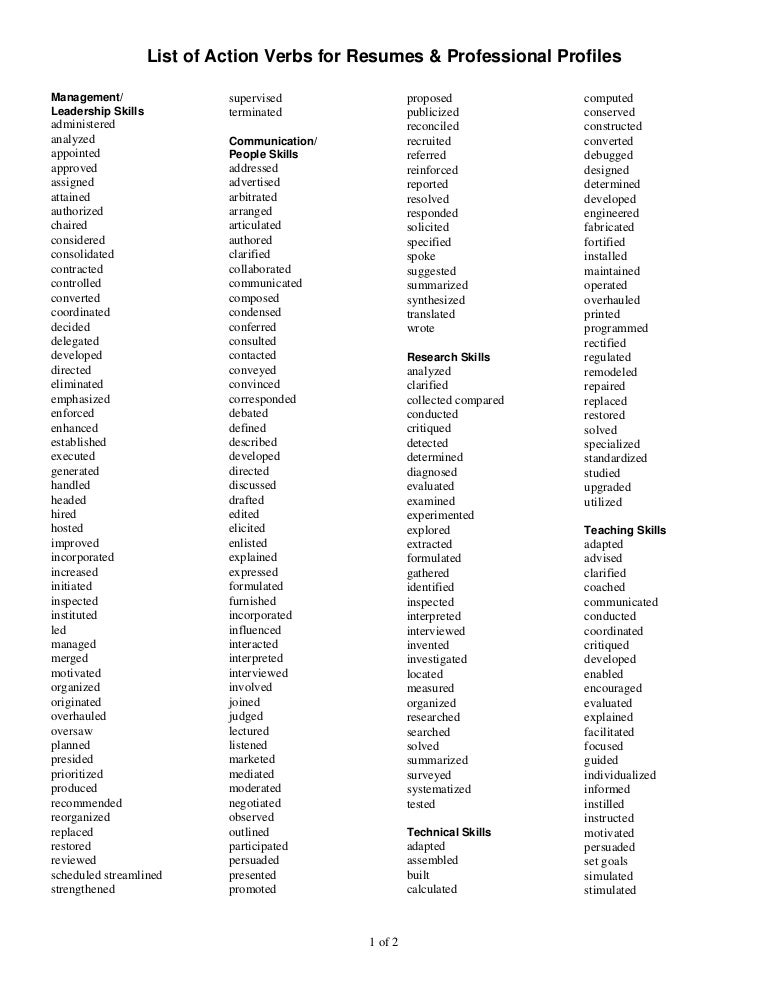 They are all very useful! If you think you’ll need it, feel free to print this action verbs list for future reference.
They are all very useful! If you think you’ll need it, feel free to print this action verbs list for future reference.
Before moving on from the physical action verb list and looking at the mental verbs list below, consider reading these resources explaining MLA format and APA format. They could help you understand how to format your next writing assignment. Or, if you’re ready, let’s move on to the next list of action verbs.
Type 2: MentalThe second type of action verbs list is for mental action words. Mental action words describe intellectual processes that don’t happen physically, but rather take place in your mind. Examples of mental action words (that are part of the action verb list below) include think, feel, and want.
List of Verbs Describing Mental Action:| Concern | Decide | Dislike |
| Doubt | Feel | Forget |
| Hate | Hear | Hope |
| Impress | Know | Learn |
| Like | Look | Love |
| Mind | Notice | Own |
| Perceive | Realize | Recognize |
| Remember | See | Smell |
| Surprise | Please | Prefer |
| Promise | Think | Understand |
It’s important to understand that some mental action words on this action verbs list don’t refer to the literal use of the word.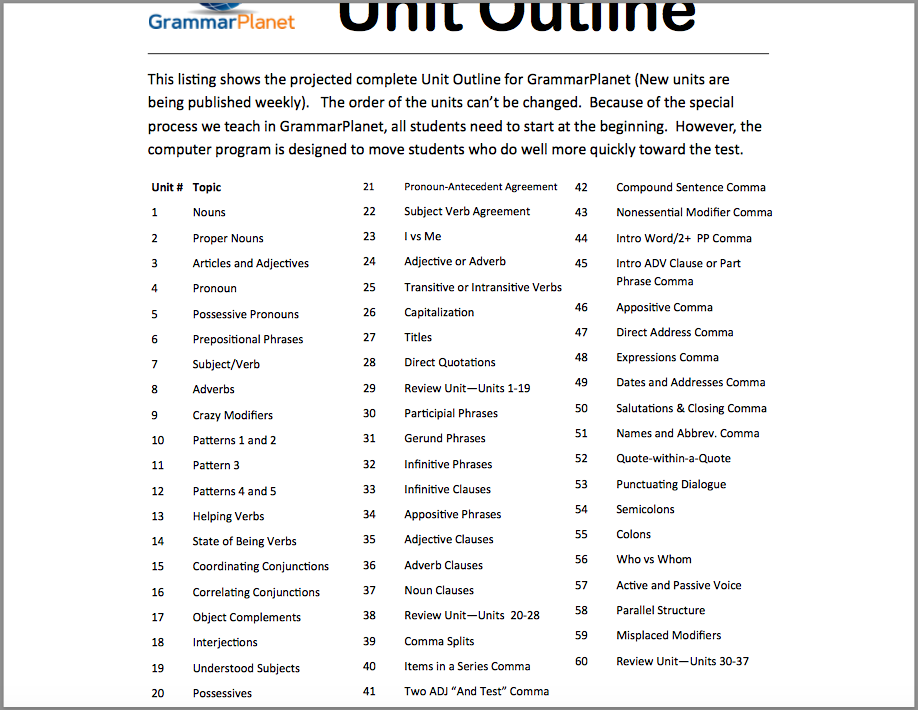 For instance, the mental list of verbs includes the words see, look, hear, and smell. These words could also be included on a list of action verbs describing physical motion. When you don’t use these words in the literal sense, they become mental action words. In other words, these words could be found on both a physical and mental action verbs list.
For instance, the mental list of verbs includes the words see, look, hear, and smell. These words could also be included on a list of action verbs describing physical motion. When you don’t use these words in the literal sense, they become mental action words. In other words, these words could be found on both a physical and mental action verbs list.
Here are some examples showing the difference:
- Action: I can see Paul jumping up and down.
In this example , you can literally see Paul jumping around.
- Mental: Frank returned from Europe yesterday? I see.
However, in the above example you can’t literally see Frank returning from Europe. Instead, “I see” means to understand. Therefore, ‘see ’used in this context is a mental word.
- Action: These roses smell wonderful.
This example refers to the physical action of smelling flowers and comments on their scent.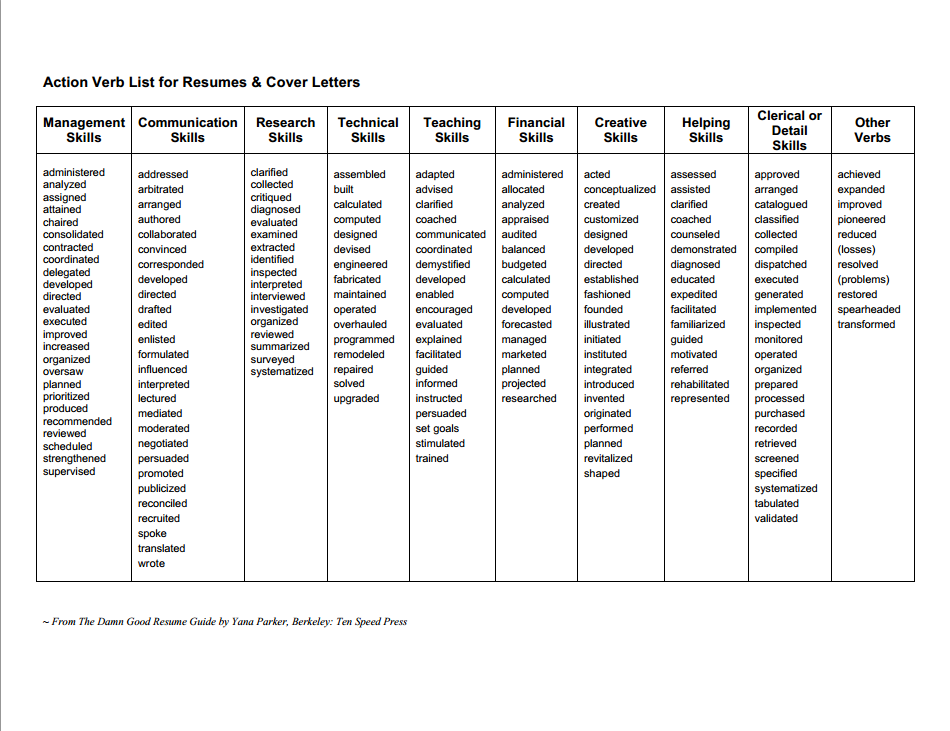
- Mental: Something smells funny about this situation.
On the other hand, in this example, nothing literally smells funny. Instead, it means that there’s something strange and unusual about the situation.
To summarize, there are hundreds of words that could go on an action verbs list. The physical verbs list and the mental list of verbs only include a few basic words of each type. There are many more to learn and they’re all fun to use. In order to expand your vocabulary, it’s helpful to study another list of action verbs. For a PDF list of action verbs, visit this site.
The next verbs list is a list of linking verbs. Even if you don’t know what they are yet, these words are very important! Pay close attention to the list of linking verbs below. You never know when a list of linking verbs might come in handy.
Linking Verbs List
There’s a list of verbs that do not describe any action. Instead, these words explain a state of being such as a condition or relationship.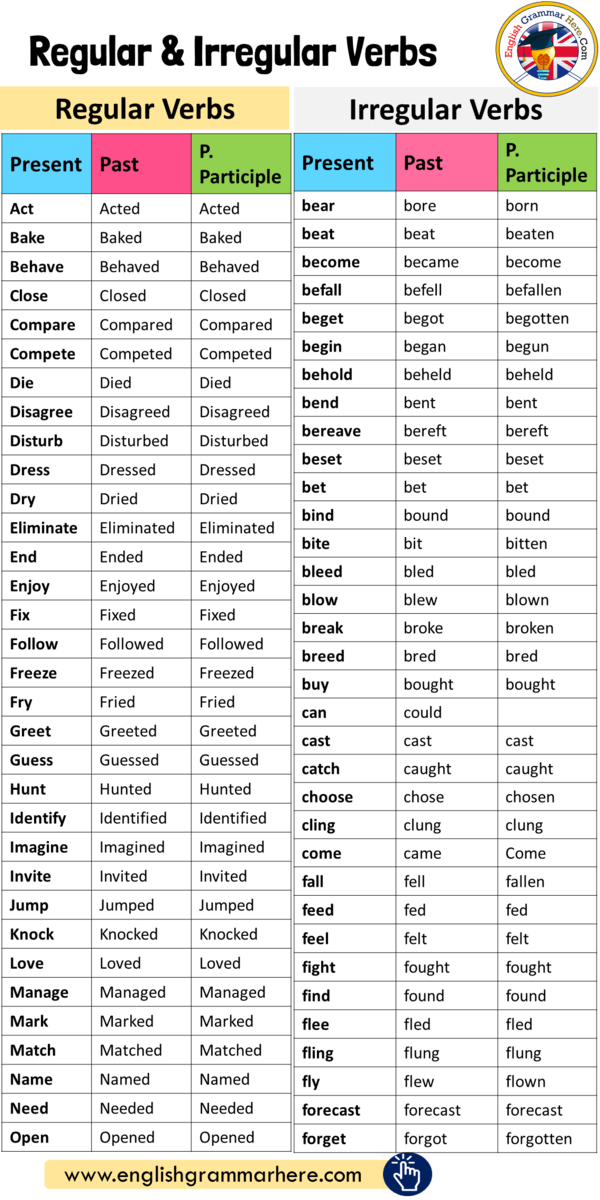 They are also commonly known as linking verbs, and they make up the linking verb list below.
They are also commonly known as linking verbs, and they make up the linking verb list below.
The words in the linking verbs list are words that connect the subject of a sentence to specific information about the subject. In other words, linking verbs connect the subject to a predicate noun or a predicate adjective.
A list of linking verbs could also be called a ‘being verbs list.’ This is because the words within a linking verbs list show a state of being. You’ll notice that most verbs on the being verbs list are forms of ‘to be’. Other verbs like ‘become’ and ‘seem’ also belong on a being verbs list.
These ‘being’ verbs (see the list of linking verbs/being verbs list below for examples) are used with subjects that are both in past and present tense. Being verbs like ‘was/were’ should be used instead of ’be’ in the past tense, and ‘is/am/are’ in the present tense. For instance:
- Amy was being cynical.
- We are being noisy.

- Andrew was afraid of Luna.
- You appear to be scared.
The being/linking words in the sentences above are included in the being verbs list below. You can use words in the linking verbs list to connect the subject with other words in a sentence. There aren’t as many words on a linking verb list as there are on a verb list for mental and physical action words, but each word in the list of linking verbs is nonetheless important.
Linking Verbs List / Being Verbs List:| Am | Appear | Are |
| Be | Become | Been |
| Being | Feel | Grow |
| Is | Look | Remain |
| Seem | Smell | Sound |
| Stay | Taste | Turn |
| Was | Were |
As you can see on the linking verbs list above, all forms of to be are important linking words.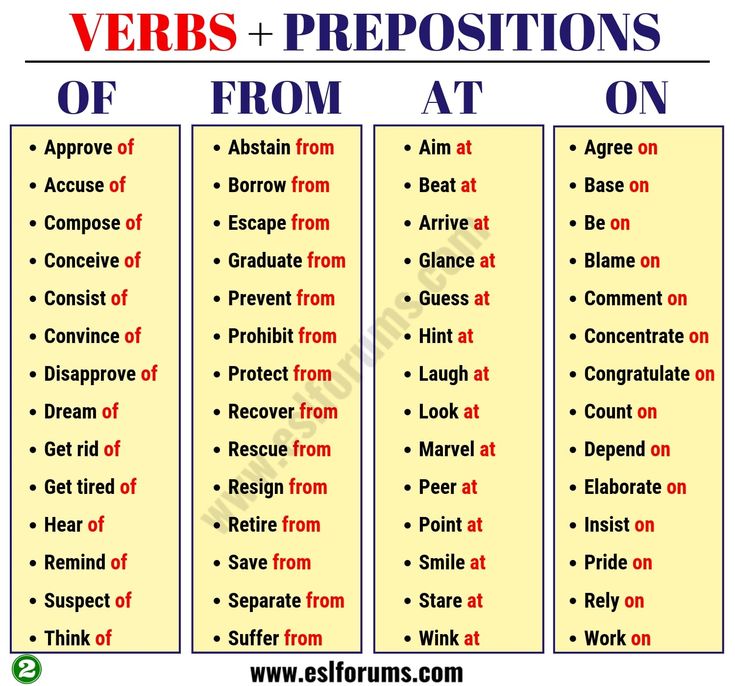 It would be difficult to have a conversation about yourself without using any of the words on this linking verbs list. Want to remember all of these? Feel free to print and save this linking verb list for reference. You could also look for another linking verb list and examples to study.
It would be difficult to have a conversation about yourself without using any of the words on this linking verbs list. Want to remember all of these? Feel free to print and save this linking verb list for reference. You could also look for another linking verb list and examples to study.
Now that you’re well-versed with action words, and the linking verb list, let’s move on to helping words.
Helping Verbs List
Now that we’ve gone over the list of linking verbs let’s talk about helping verbs. A helping verb ‘helps’ or supports the main verb. There are two types of words within the helping verbs list: auxiliaries and modals.
Both auxiliaries and modals add more meaning to the main action or the being word. They can also describe the period of a physical or mental action taking place. They can also add emphasis to your sentences and indicate an event happening.
Auxiliaries (like those in our helping verb list below) extend the main verb and help show time, tense or possibility.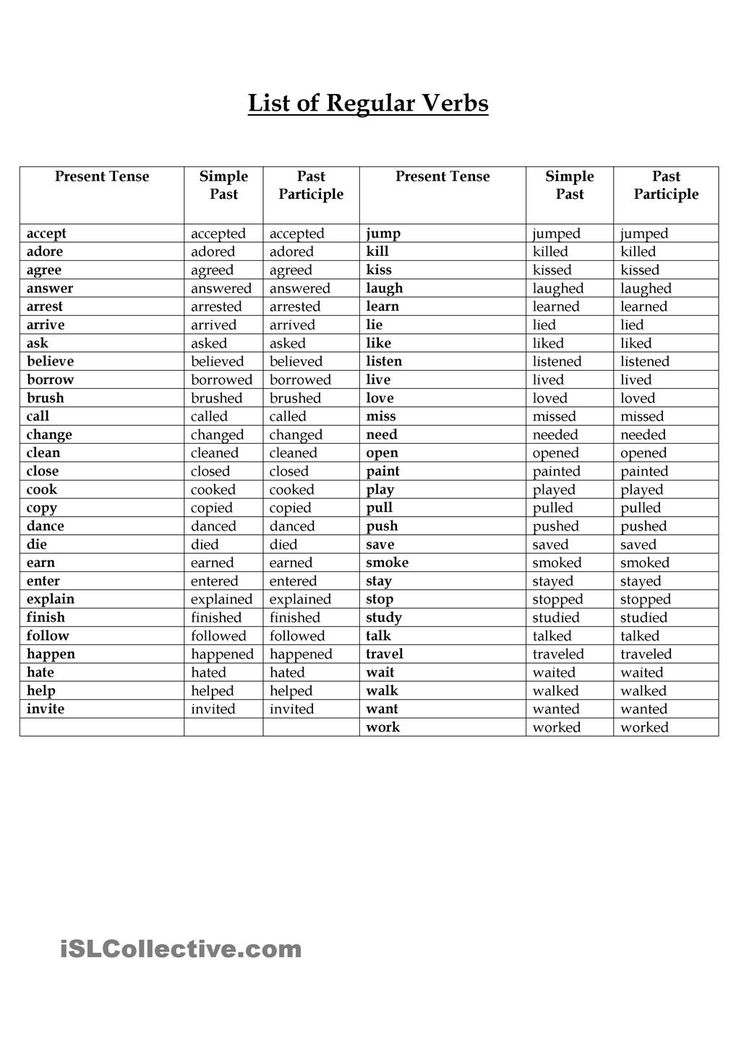
Examples of auxiliary verbs:
- Matthew is going out for lunch.
- I have finished my homework.
Modals indicate possibility, ability or expectation. A list of helping verbs that are modal are further down this page, but let’s start with a few example sentences; they’ll help us understand how they’re used.
Examples of modals:
- Wilson may want to talk to you again.
- Alexa must go to work today.
If you want to learn how to create complex sentences, then it’s important to study a helping verbs list. Here’s your first list of helping verbs.
List of Helping Verbs, Auxiliaries| Auxiliary Word | And all its forms… |
|---|---|
| To Be | Am, Are, Is, Was, Were, Be, Been |
| To Have | Have, Has, Had |
| To Do | Do, Does, Did |
So, how do you know that the words in this auxiliary helping verbs list are actually ‘helpful’ or act as standalone words? Simply look for other verbs (action or being words) in the sentence.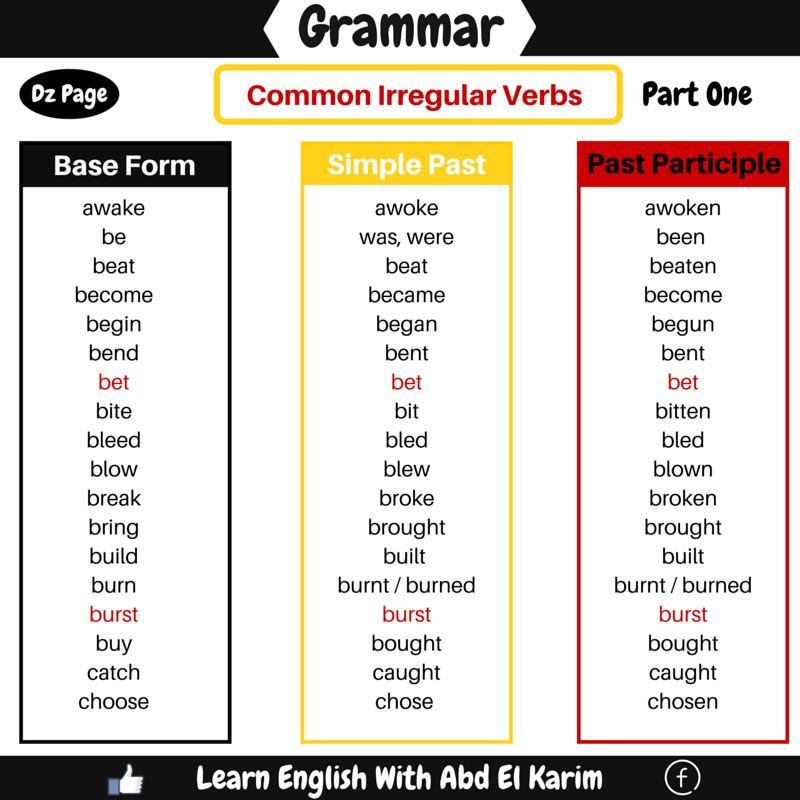 If you notice any form of ‘to be’, ‘to have’, or ‘to do’ before another action or being word, then you’re looking at a sentence with an auxiliary.
If you notice any form of ‘to be’, ‘to have’, or ‘to do’ before another action or being word, then you’re looking at a sentence with an auxiliary.
Using the previous auxiliary helping verbs list, can you figure out which word is the auxiliary in the examples below?
- Charlie’s mother is cooking breakfast for us tomorrow.
- Tina hasn’t exercised today.
Both modals and auxiliaries can be found on a list of helping verbs. Modals are usually followed by the infinitive of another verb. Just like the list of linking verbs, the list of modals within the list of helping verbs is also small and therefore easy to remember. A verbs list with modal verbs is given below.
List of Helping Verbs, Modals| Can | Could | May |
| Might | Must | Ought to |
| Shall | Should | Will |
| Would |
Here are some examples of how modals, from the above list of verbs, explain uncertainty, obligation, and possibility.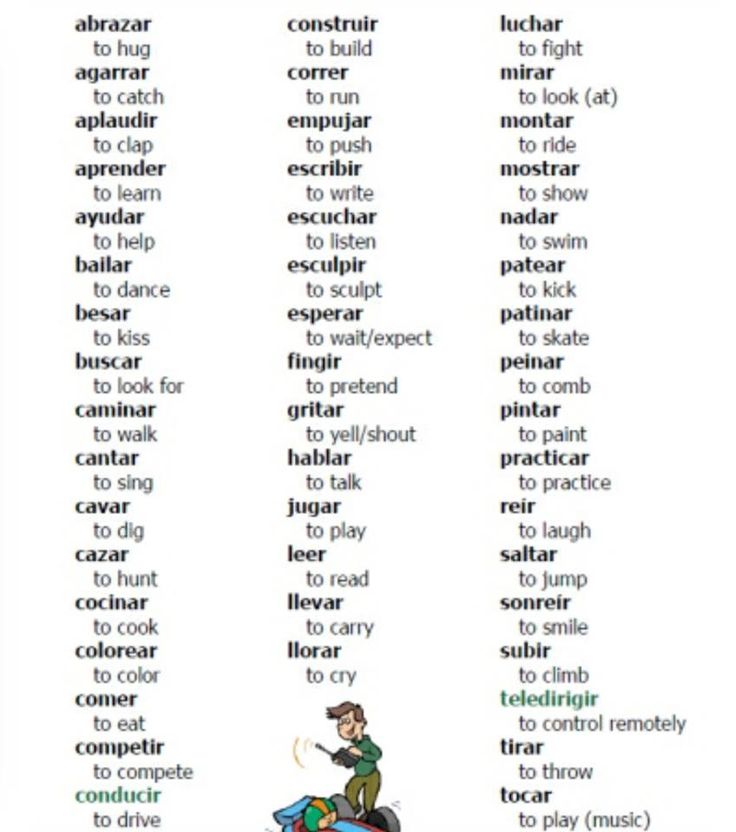
- I must go to school today.
There’s an obligation to go to school.
- You could go to school today.
In this sentence, it’s possible that you will not go to school today.
- Jennifer’s not sick and should go to school today.
And in this sentence, it’s possible that Jennifer doesn’t go to school.
- If Tommy feels better tonight, he might go to school tomorrow.
Whereas in this sentence there’s a chance that Tommy may or may not go to school.
Now that you are well versed with a linking verbs list, a list of verbs that are ‘helpful,’ and a verbs list for action words, let’s move on to the next section: a list of irregular verbs.
Irregular Verbs List
The next verbs list you’ll look at is the list of action verbs that are irregular, thus they are part of the irregular verbs list. So what exactly are irregular verbs? Well, verbs that do not follow the normal rules for conjugation fall into the irregular verbs list.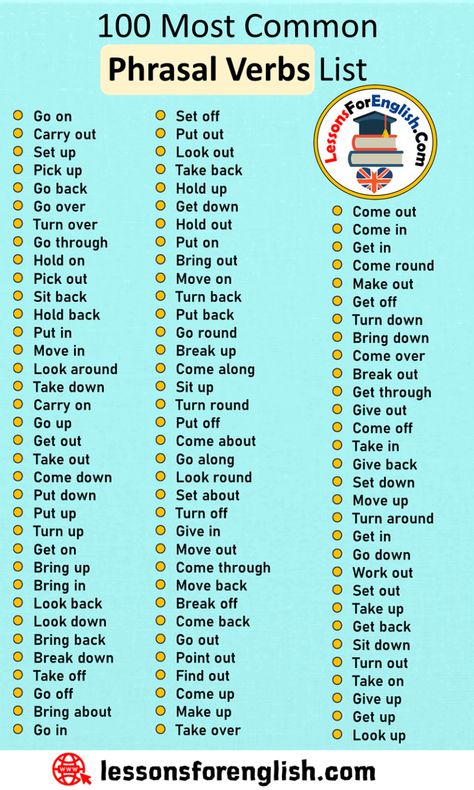
Basically, most ‘normal’ words in the past tense have an -ed at the end. Examples include jumped, skipped, and leaped.
- jump → jumped
- skip → skipped
- leap → leaped
- walk → walked
This conjugation pattern applies to most words. However, irregular verbs — like those in the irregular verbs list below — don’t follow this normal pattern. For example:
- Draw → drew, drawn
These verbs shift tenses according to its own set of rules, and thus belong on our list of irregular verbs.
The words in the list of irregular verbs below are shown with their past simple and past participle versions. You could say, that it is also an irregular past tense verbs list.
An irregular past tense verbs list generally includes words like brought, were, became, etc. The irregular past tense verbs list below presents English past tense verbs.
Irregular Past Tense Verbs List:| BASE FORM | PAST SIMPLE | PAST PARTICIPLE |
|---|---|---|
| Be | Was or Were | Been |
| Become | Became | Become |
| Bring | Brought | Brought |
| Build | Built | Built |
| Catch | Caught | Caught |
| Draw | Drew | Drawn |
| Fly | Flew | Flown |
| Get | Got | Got |
| Go | Went | Gone |
| Grow | Grew | Grown |
| Hold | Held | Held |
| Learn | Learnt/Learned | Learnt/Learned |
| Smell | Smelt | Smelt |
Did you come across any new verbs in this irregular verbs list? There are many other words that could be added to this irregular past tense verbs list, but this list of verbs is a good start.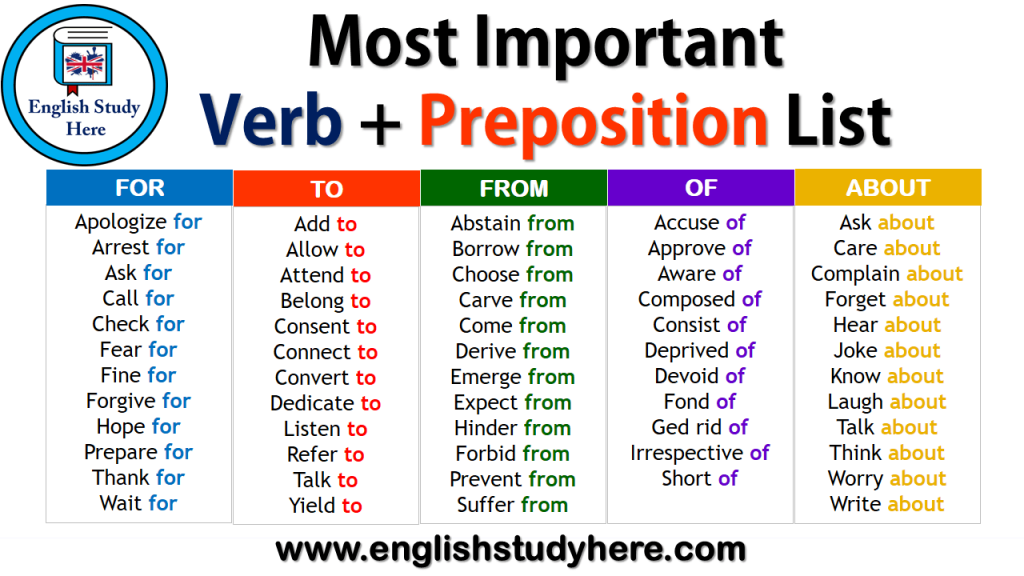 Hopefully, this list of irregular verbs (or irregular past tense verbs list) will help you write your assignments with greater precision. Once you’re done studying the list of irregular verbs, visit this informative site for further learning.
Hopefully, this list of irregular verbs (or irregular past tense verbs list) will help you write your assignments with greater precision. Once you’re done studying the list of irregular verbs, visit this informative site for further learning.
Congratulations on reviewing many verb list types! Now that you have finished reading a comprehensive linking verbs list and studied a helpful list of verbs along with an irregular verbs list, why not get some help on your next English assignment? The paper checker from Citation Machine Plus lets you make citations in APA format and more citation styles. Try it out today!
Published March 5, 2019. Updated April 16, 2020.
How useful was this post?
Click on a star to rate it!
We are sorry that this post was not useful for you!
Let us improve this post!
Tell us how we can improve this post?
The verb to be
Everyone knows Shakespeare's phrase from Hamlet: "To be or not to be? That is the question…”, which translates as “To be or not to be, that is the question…”.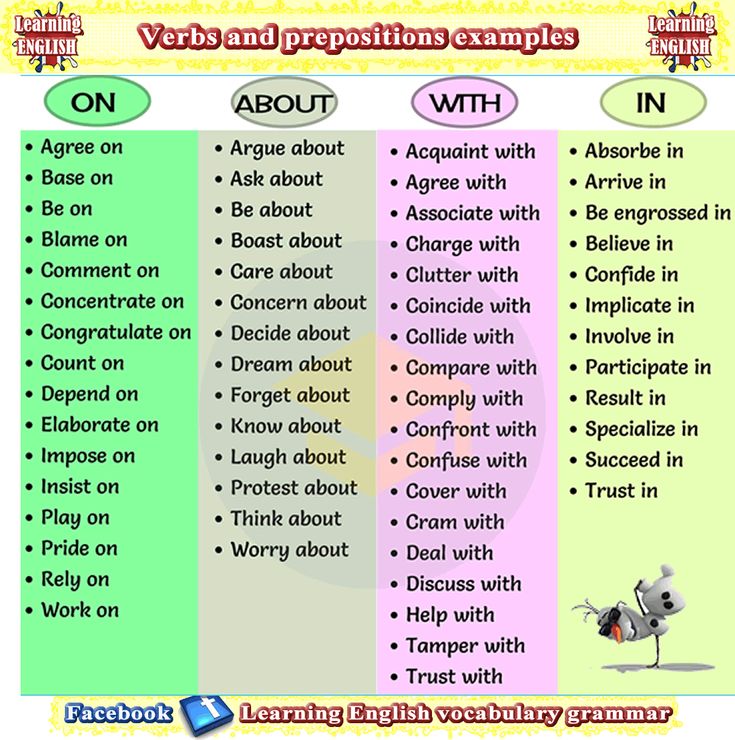 In fact, for people studying English, it is the verb to be that causes a huge number of questions and difficulties regarding its use. This article will provide detailed information about all forms and cases of using the verb to be.
In fact, for people studying English, it is the verb to be that causes a huge number of questions and difficulties regarding its use. This article will provide detailed information about all forms and cases of using the verb to be.
So, the verb to be plays a particularly significant role in the grammar of the English language. It can act in a sentence as a semantic verb, modal, auxiliary, linking verb, and a large number of grammatical constructions are formed with the verb to be. By itself, to be is an irregular verb, which means that all three of its forms are not formed according to the rule, and they just need to be remembered: be - was / were - been.
Below, the verb to be will be considered in detail in each case of use. But first of all, we should mention the conjugation of the verb according to persons, numbers and tenses.
The table shows the conjugation of the verb to be by tense and number for the Simple group.
As can be seen from the table, special attention should be paid to the conjugation to be in the 1st and 2nd person singular, as well as the fact that in the Future Simple the verb to be needs an auxiliary verb will.
The negative form of the verb to be is formed with the negative particle not, which is attached directly to the verb itself.
Interrogative sentences with the verb to be are formed without an auxiliary verb. The verb to be in the required form comes first, followed by the subject, and then the secondary members of the sentence. When constructing a question in the Future Simple (simple future tense), the auxiliary verb will will come first, then the subject, then the verb to be, and then everything else.
Now let's move on to the study of each specific case of the use of the verb to be.
1. The verb to be as an independent verb.
As an independent (semantic) verb, the verb to be has the meaning "to be", "to be", "to be". For example:
I am at home. - I'm home. (Literally, I am at home or I am at home)
We are not happy with the situation. We don't like this situation. (That is, we are not happy in connection with it).
(That is, we are not happy in connection with it).
2. The verb to be as an auxiliary verb.
Like other auxiliary verbs, in this case the verb to be has no semantic meaning, it only performs an important grammatical function. As an auxiliary verb, the verb to be is involved in the formation of the following tenses: Present Continuous, Past Continuous, Future Continuous, partially in all tenses of the Perfect Continuous group (in the form has been), as well as for the formation of passive constructions.
Continuous means that the action happened, is happening or will happen at a certain moment in the past or future, or at the moment of speech in the present. Therefore, the following temporary indicators are typical for this time: now - now, at the moment - at the moment, at 5 o'clock - at 5 o'clock, at this / that time - at this / that time and others.
Continuous forms are formed according to the following formula: to be (in the required form) + a verb with the ending -ing.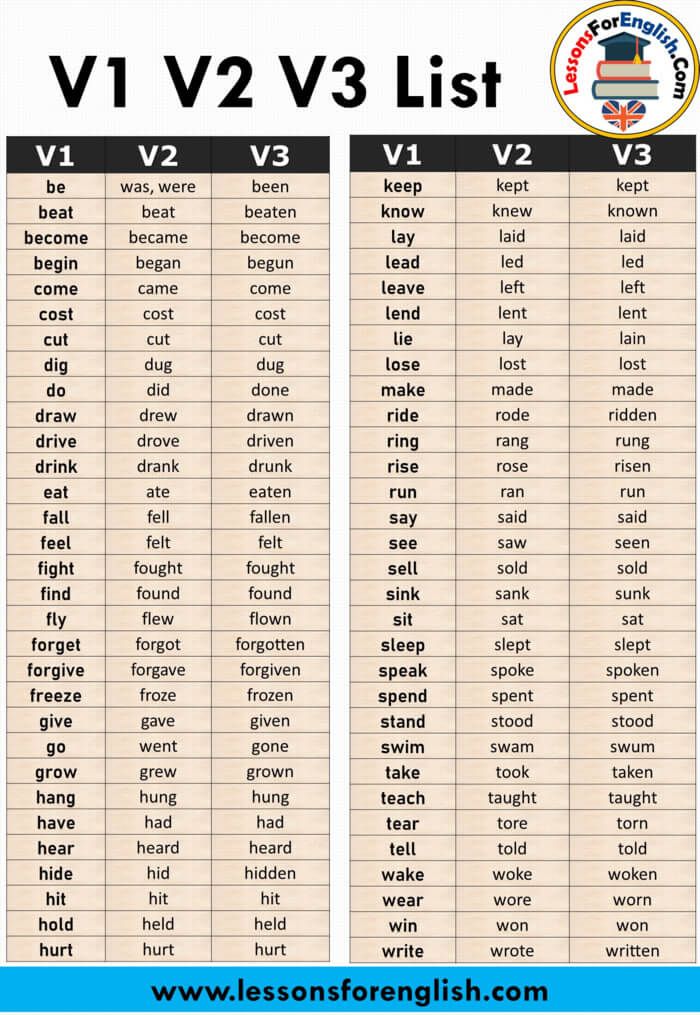
I am reading now. - I'm reading now.
In the Future Continuous, together with the verb to be, there will be an auxiliary verb will.
Tomorrow at 6 o'clock I will be watching TV. Tomorrow at 6 o’clock I will be watching TV.
The verb to be will change in persons and numbers only in the present and past tenses. In interrogative and negative sentences in Present Continuous and Past Continuous, the auxiliary verb for to be is not required.
I wasn't sleeping. - I did not sleep.
Am I reading? - I am reading?
In negative sentences in Present and Past Continuous, we attach the particle not to the verb to be, and in the Future Continuous, the particle goes to the auxiliary verb will. In interrogative sentences in Present and Past Continuous, the verb to be comes first, then the subject, then the verb ending in -ing, followed by the secondary members of the sentence.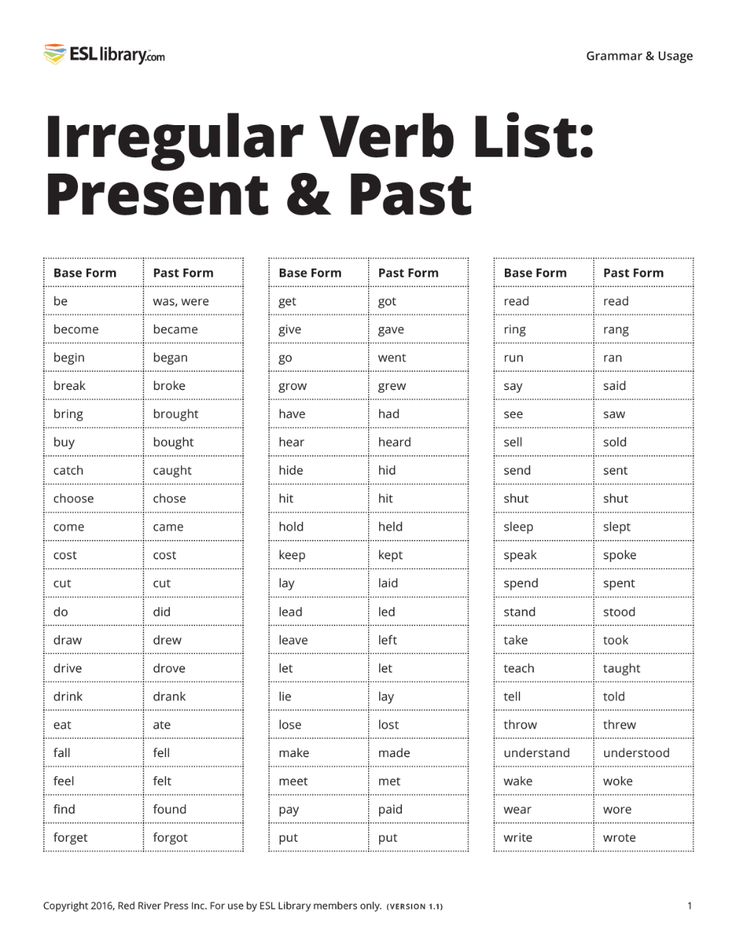 If there is a question word in the question, then it will take the first position in the sentence. As for the word order in questions in the Future Continuous, we first put will, then the subject, then be and the verb ending in -ing, followed by the secondary members of the sentence.
If there is a question word in the question, then it will take the first position in the sentence. As for the word order in questions in the Future Continuous, we first put will, then the subject, then be and the verb ending in -ing, followed by the secondary members of the sentence.
The verb to be in Present Continuous:
I am reading a book now. — I am reading a book now.
I am not reading a book now. I am not reading a book now.
Are you reading a book now? Are you reading a book now?
Why are you reading this book? Why are you reading this book?
The verb to be in Past Continuous:
He was watching TV at 5 o'clock yesterday. He was watching TV at 5 o'clock yesterday.
He wasn't watching TV at 5 o'clock yesterday. He didn't watch TV yesterday at 5 o'clock.
Was he watching TV at 5 o’clock yesterday? Was he watching TV at 5 o’clock yesterday?
Where was he watching TV at 5 o'clock yesterday? Where did he watch TV yesterday at 5 o'clock?
Verb to be in Future Continuous:
She will be swimming tomorrow at this time.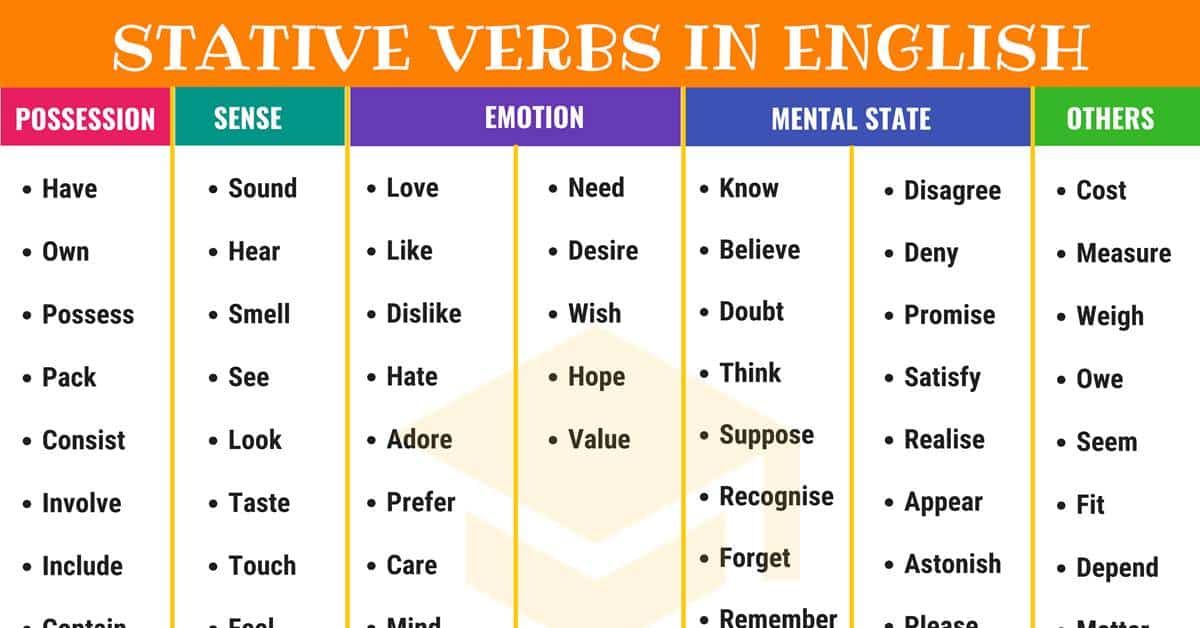 She will be swimming at this time tomorrow.
She will be swimming at this time tomorrow.
She won't be swimming tomorrow at this time. She will not be swimming at this time tomorrow.
Will she be swimming tomorrow at this time? Will she be swimming at this time tomorrow?
What will she be doing tomorrow at this time? What will she be doing at this time tomorrow?
In perfect forms, sentences using the auxiliary verb to be will look like this:
Now we need to consider the use of the verb to be in passive constructions (Passive Voice).
The passive voice is used when talking about the person or thing that the action is directed at:
when the action that happens to a person or object is important (The problem is solved - The problem is solved)
· when there is no information about the person performing the action, or it is not important at all. My bike is stolen - My bike was stolen (who did it is unknown).
The forms of the verb to be in the passive voice can be presented in the form of a table:
Examples of the use of the verb to be in the passive voice:
Students are examined twice a year. Students are examined twice a year.
Students are examined twice a year.
They were examined in June. They were examined in June.
They will be examined next Friday. They will have an exam next Friday.
Keep quiet! The students are being examined. - Do not make noise! Students are taking an exam.
The students were being examined when the Professor came. The students were taking an exam when the professor came.
Our students have already been examined. Our students have already taken the exam.
They had been examined by 2 o'clock. By two o'clock they had already taken the exam.
Everybody will have been examined by 3 o'clock. Everyone will have their exam by three o'clock.
3. The verb to be as a linking verb.
The verb to be is very often used as a linking verb to connect the subject and the compound predicate: The house is very old and ugly. The house is very old and ugly.
He was my best friend when we were children.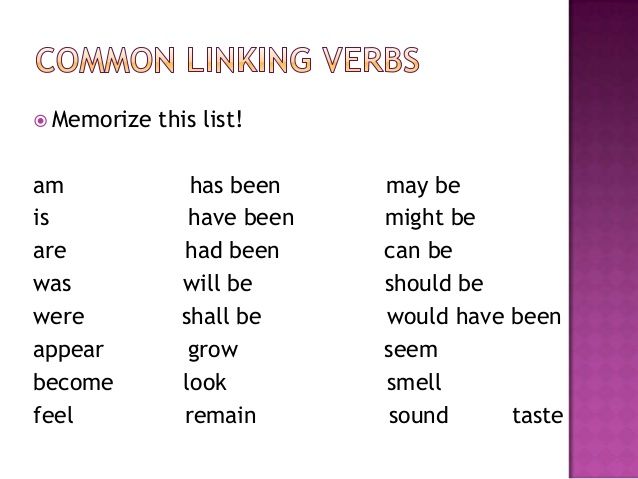 “He was my best friend as a child.
“He was my best friend as a child.
He was a middle-aged man. — He was a middle-aged man.
4. The verb to be as modal.
To all of the above, we must add that the verb to be can also act as a modal verb to be to. As a modal verb, to be to is used in Present Simple and Past Simple.
We are to meet at six. We are to meet at six.
We were to meet at six. We were supposed to meet at six.
The modal verb to be to is used in the following meanings:
- A preformed plan or a need arising from this plan
We are to discuss this issue next time. We need to discuss this issue next time.
We were to discuss it the following week. We were supposed to discuss this next week.
Is he to arrive tomorrow? Should he come tomorrow?
Who was to speak at the meeting? Who was to speak at the meeting? - Orders and instructions which are of an official nature
Norman says I am to leave you alone.
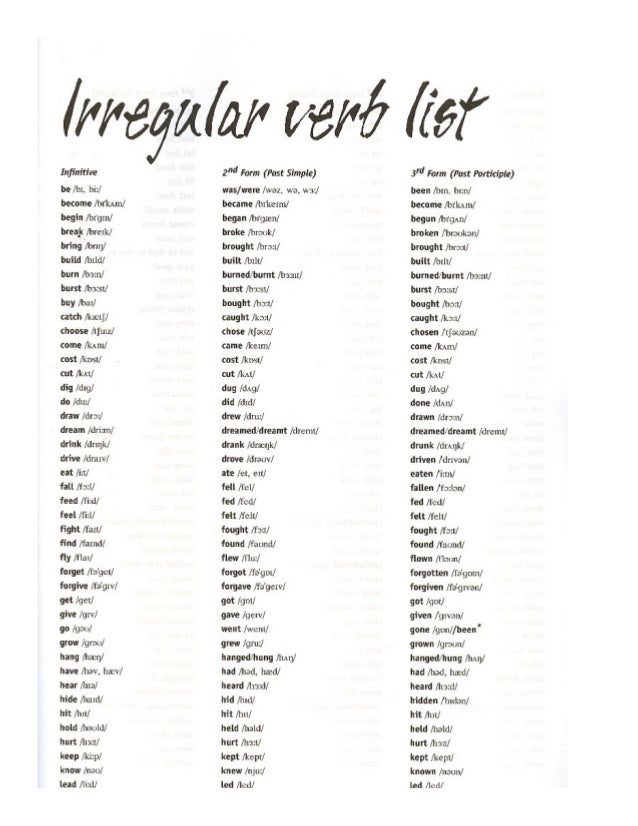 Norman said to leave you alone.
Norman said to leave you alone.
All students were to tell the headmaster about the incident. All students were required to report the incident to the principal. - When something is destined to happen (in this case, the modal verb would be translated as "destined")
He was to be my teacher and friend for many years to come. “He was destined to be my teacher and friend for many years to come.
- Possibility, probability of occurrence of an event
Where is he to be found? - Where can you find it?
Nothing was to be done under the circumstances. Nothing could be done under the circumstances. - Also in set expressions with to be to:
What am I to do? - What should I do? What do i do?
What is to become of me? - What will happen to me?
Where am I to go? - Where should I go? Where am I to go?
5. The verb to be in constructions to be going to/ to be about to/ to be due to
The construction to be going to is used in English to express the future tense, and in Russian it is translated as "to gather, intend to do something.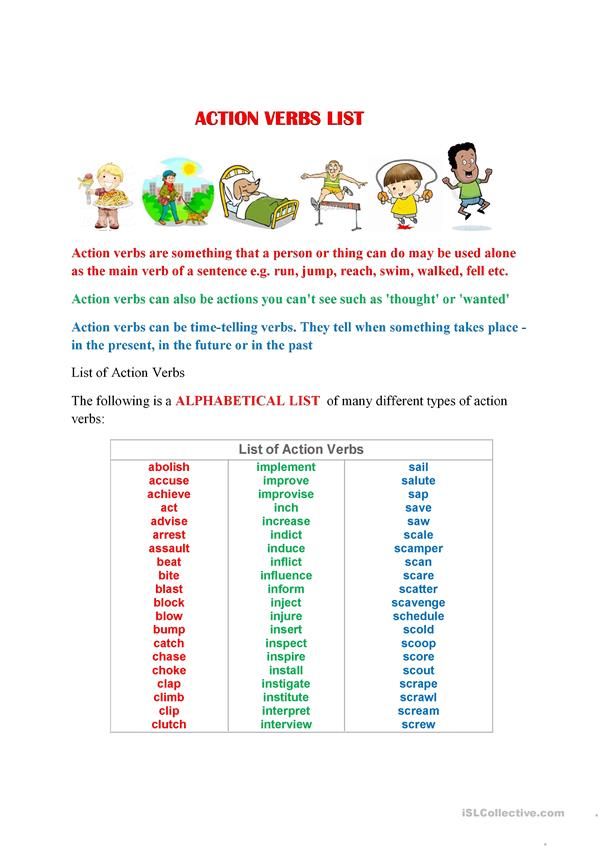 " It can be used in Present or Past, therefore, the verb to be in this construction can take the forms am/is/are and was/were, depending on the context.
" It can be used in Present or Past, therefore, the verb to be in this construction can take the forms am/is/are and was/were, depending on the context.
I am going to wash the floors. — I'm going to wash the floors.
She wasn't going to tell me the whole story. She wasn't going to tell me the whole story.
They were going to sell the house last year. They were going to sell the house last year.
The construction to be about to is also used to express a future action and implies that the action will take place in the near future.
Hurry up! The performance is about to start! - Hurry! The show is about to begin.
The construction to be due to should be used when we talk about future actions that will occur according to a schedule.
The plane is due to land at 2.45. The plane is due to land at 2.45.
In conclusion, I would like to present a list of expressions that are often used with the verb to be:
To be happy / unhappy
I am so happy that you have come! - I'm so happy you came!
To be glad
We are glad to say that you won't have this new car! We are happy to inform you that you have won this brand new car!
To be hungry / to be full up - to be hungry / full up
I am so hungry.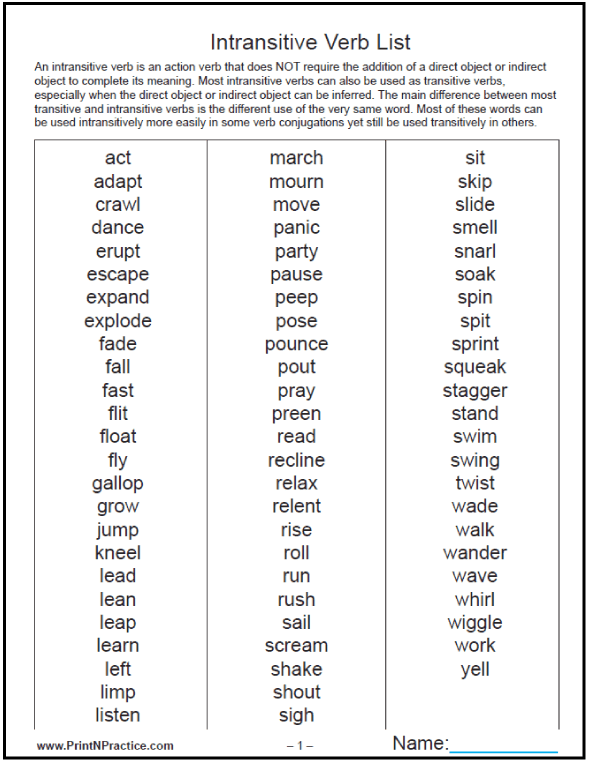 I would like to eat a big pizza! - I'm so hungry. I would like to eat a big pizza.
I would like to eat a big pizza! - I'm so hungry. I would like to eat a big pizza.
To be fond of - to love, to be fond of something
I am fond of gardening. — I am fond of gardening.
To be busy
Mary is always so busy that she doesn't have any time for hobbies. Mary is always so busy that she doesn't have time for hobbies.
To be late (for)
John is always late for appointments. John is always late for meetings.
To be in time for - be on time
You are in time! - You're just in time!
To be lucky - to be lucky
You are so lucky that you have been there! You are so lucky that you managed to go there!
To be afraid (of)
I am afraid of spiders. - I'm afraid of spiders.
To be interested (in) - be interested in / get involved in something
He is interested in aviation. He is interested in aviation.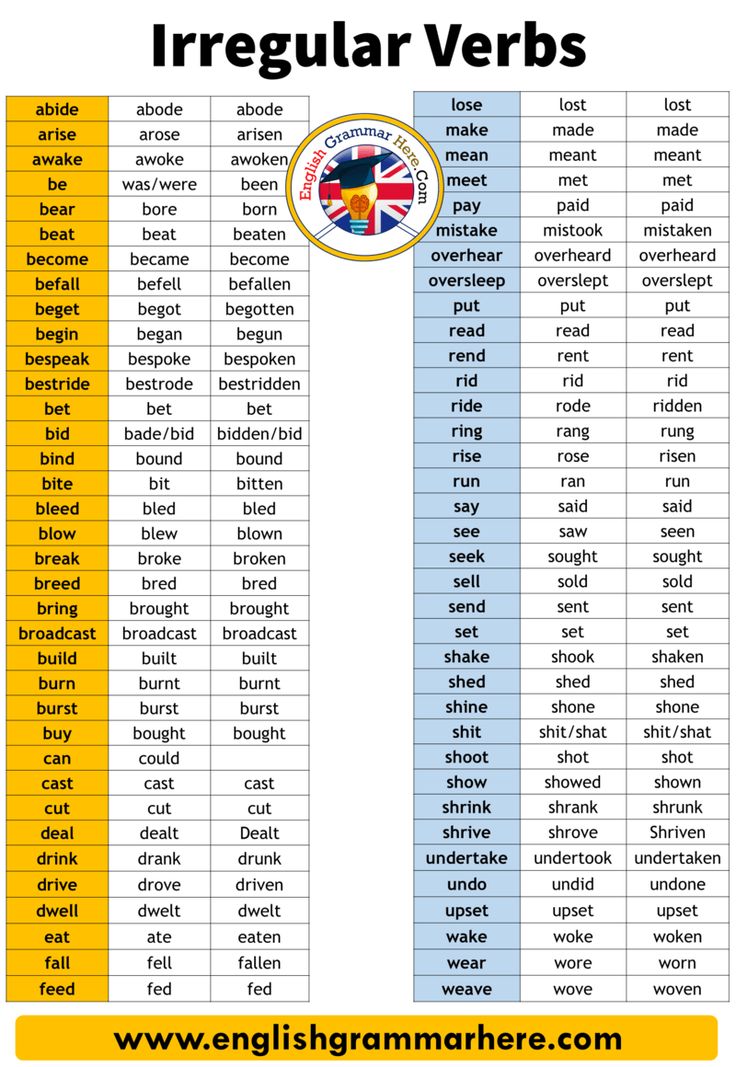
To be ill / well - to get sick / feel good
I am ill. I have a sore throat and a terrible headache. - I am sick. I've got a sore throat and headache.
To be angry (with)
Jane is angry with Tim, that's why they don't talk to each other. Jane is mad at Tim, that's why they don't talk.
20 non-existent verbs that we continue to use for some reason
We will not remind you of “lay down” (more precisely, “put”) and “put on/put on”. You know. But let's talk about the forms of verbs, which almost always raise doubts. Write down, memorize and send the link to relatives who can’t remember that “cries”, “burns” and “waves” is wrong. And another bonus: “eat” or still “eat”?!
Correct: Go
Sending on the road correctly is very important. And it is not necessary to demand before that "to sit on the path" or to wish "God bless you!". It is also possible, of course.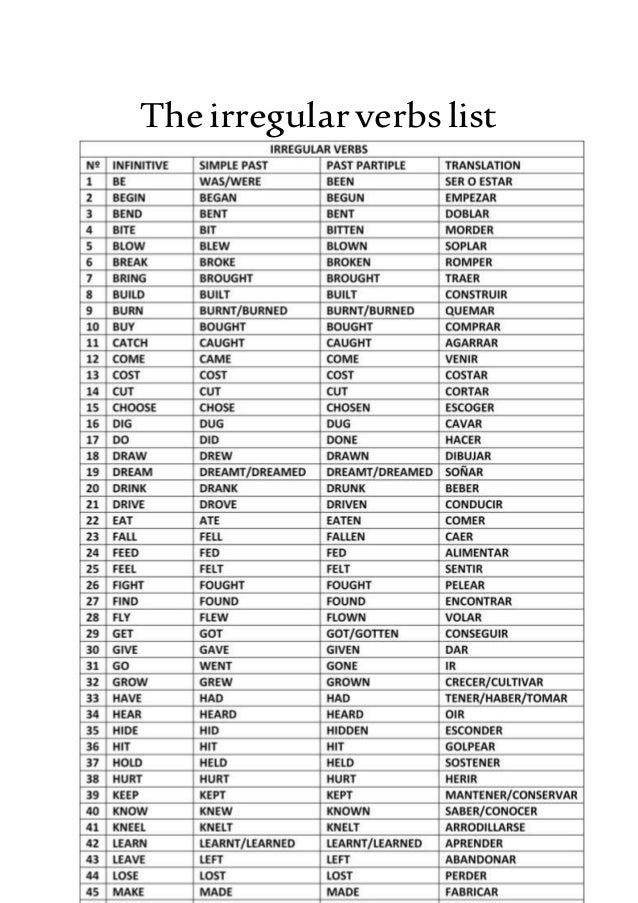 But it’s much better to just say correctly (tested by roads and travels). In general, if you are advised to "go", "go" or "go" - do not listen and ignore. The only correct variant of the imperative mood of the verb "to go" is "go". Yes, strange. But as it is.
But it’s much better to just say correctly (tested by roads and travels). In general, if you are advised to "go", "go" or "go" - do not listen and ignore. The only correct variant of the imperative mood of the verb "to go" is "go". Yes, strange. But as it is.
Correct: Do you write correctly?
Who has never confused two similar forms of the verb "to write"? You may not confess so easily, but there are many such sealers. The verb "to write" in the imperative mood is written through "and": "Write letters!" If the second person is plural, then it will be: "You write illiterately." There is one explanation: we write “I” under the stress, “E” in the unstressed position. More similar examples: “Look / are looking for” (“Look for a woman!”, “Are you looking for something?”), “Say / say” (“Tell me, who wrote this?”, “And then you will say: “Wow! ").
Correct: Sit the child on your knees
All the parents must have shuddered at the phrase “sit the children down”.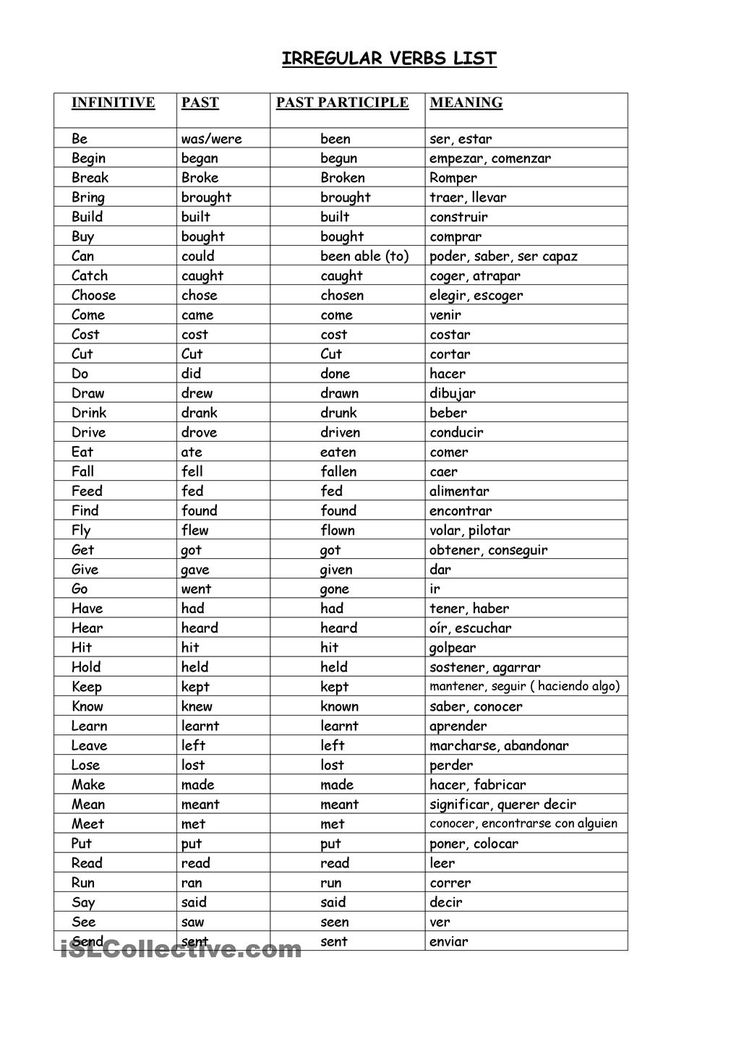 The phrase is really wrong and sounds frightening. Although the verb "to plant" still lives in some dictionaries marked "colloquial". In general, a literate person definitely shouldn’t say that. It will be correct to "plant" - whether it be trees in the forest, tomatoes in the country, violets at home, guests at the table or a child on his knees. Although 100 years ago the verbs "to plant" and "to plant" were considered equal synonyms.
The phrase is really wrong and sounds frightening. Although the verb "to plant" still lives in some dictionaries marked "colloquial". In general, a literate person definitely shouldn’t say that. It will be correct to "plant" - whether it be trees in the forest, tomatoes in the country, violets at home, guests at the table or a child on his knees. Although 100 years ago the verbs "to plant" and "to plant" were considered equal synonyms.
Correct: The snow kept melting
Two paronymic verbs whose forms we can confuse: “melt” and “hide”. They belong to different conjugations, and their endings are also different. For example, in the present tense the snow is "melting", the snowdrifts are "melting", and in the past it has already "melted" or "melted". The second verb "to conceal" is about secrets. If we want to say that someone kept something secret, then it will be "hidden" or "hidden". But there is a suspicion that we rarely want to say this about snow (unless we are interested in the contents under the snowdrifts, which thaw in the spring).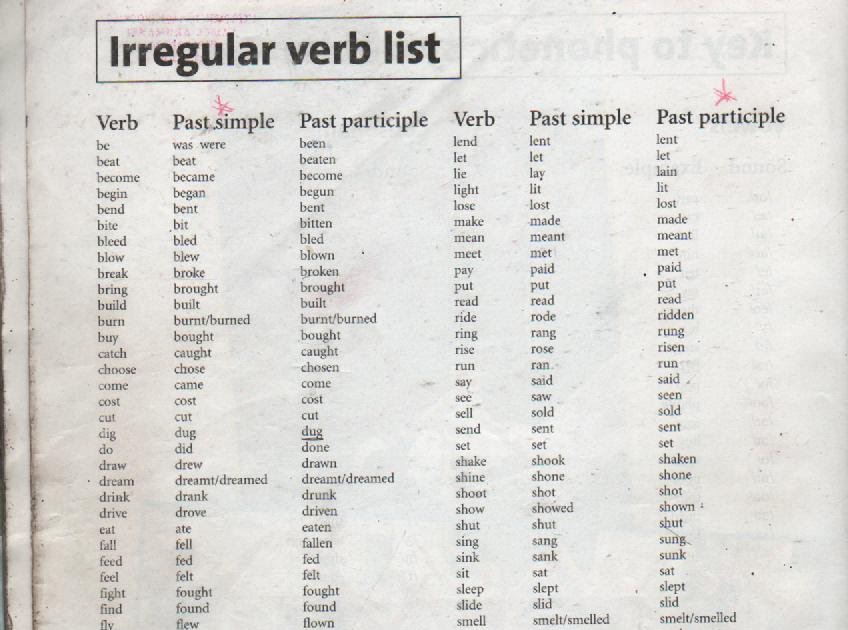
Correct: In the evening we will light it up
In the forms of the verb "ignite" (and "burn") there is a root alternation of "zhzh" and "zhg". It is difficult to say “I will light”, but “they will light”, therefore in the first person and third person (plural) everything is obvious: “I will light”, and “They will light”. Because of this, I desperately want to add that you will also “light it up”, she will “light it up” and we will all “light it up” together. But there are no such options in Russian. Sorry.
Correct: Grandmother bakes the most delicious pancakes
We envy your grandmother's pancakes! In the verb "bake" (and "bake") the same story as with the verb "burn" (and "ignite"). I “bake”, and the children “bake”, but my grandmother exclusively “bakes” pies. The verb "bake" does not have the form "bake". So we "bake", and Grandma also "bakes".
Correct: Wave goodbye
Is the child waving or waving? Are the children waving or waving? The correct forms of this verb in the third person in the present tense are "waving" and "waving".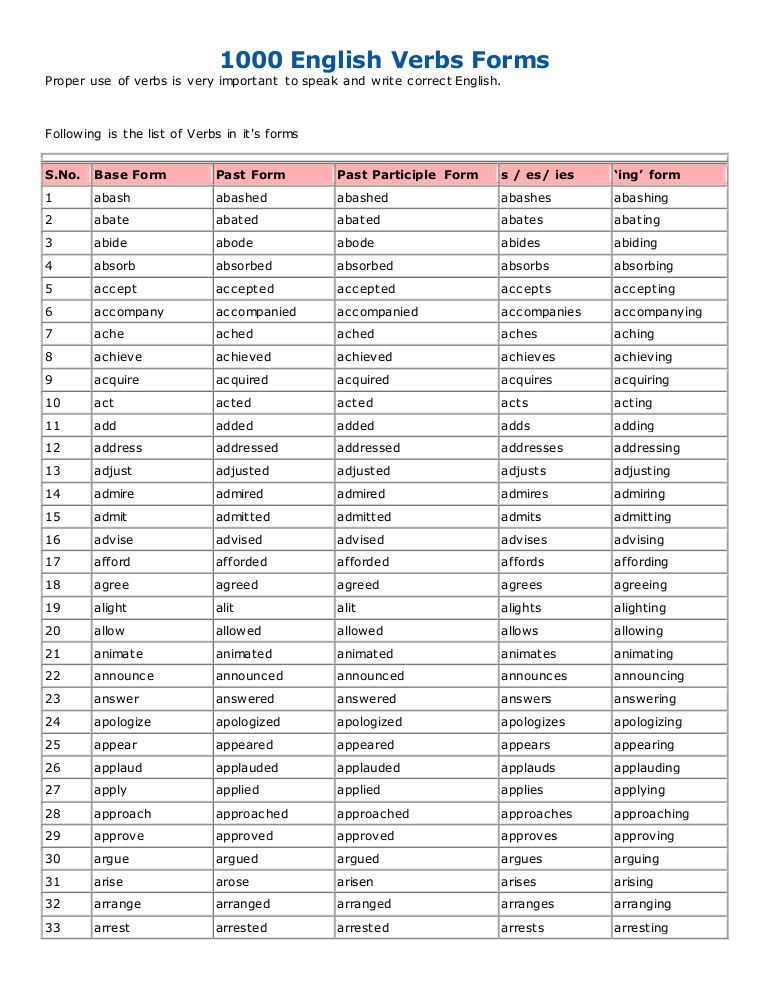 While in the past tense it is correct to say "waving" and "waving". This is probably how the “waves” symbiosis appeared. Recently, the form "waving" is considered acceptable in colloquial speech. But we still cast our vote for the literary norm "waving, waving, waving, waving" and so on. So when you ask your child to wave goodbye to someone, do it right: “Wave your hand!”
While in the past tense it is correct to say "waving" and "waving". This is probably how the “waves” symbiosis appeared. Recently, the form "waving" is considered acceptable in colloquial speech. But we still cast our vote for the literary norm "waving, waving, waving, waving" and so on. So when you ask your child to wave goodbye to someone, do it right: “Wave your hand!”
Correct: Why is he crying?
Difficulty in the correct form of the verb "to cry" arises for approximately the same reason as with the verb "to wave". The correct conjugation of the verb "cry" is I cry, you cry, she cries, we cry, and so on. And in the past tense, the letter "k" appears: "cried", "cried". But if different options are allowed in the verb "to wave", then in the verb "to cry" there is only one: "Why is he crying?"
Correct: I can still convince you
Perhaps you guessed that not only the verb "to win" is deprived of the future tense in the first person singular.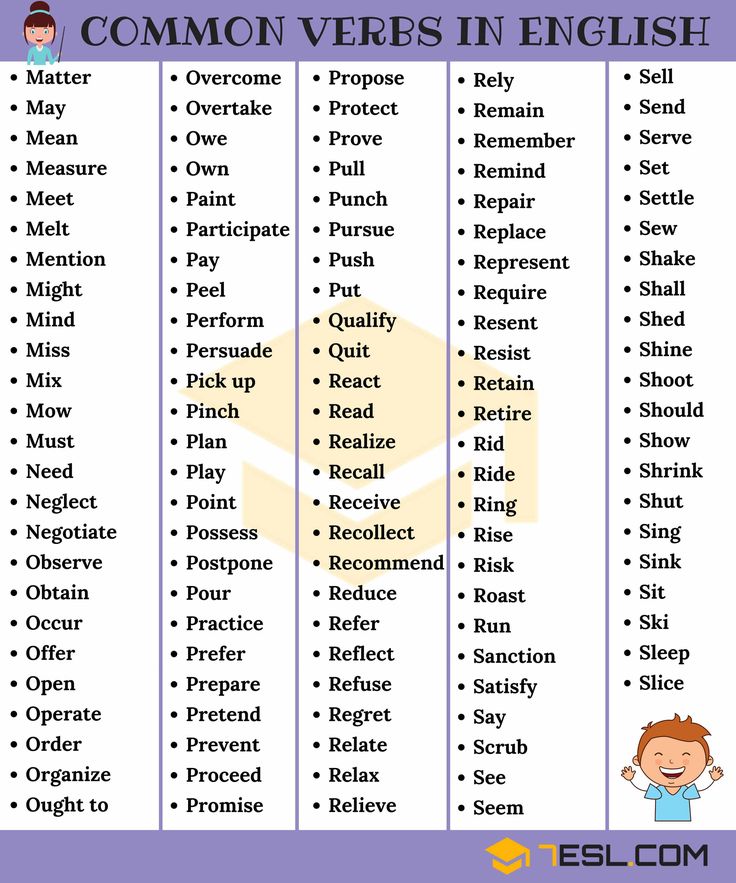 By the way, Rosenthal calls such deprived verbs “insufficient”. In order, for example, to say about yourself in the future tense, you need to use something like an auxiliary verb (almost like in English!). In our example, there is no “I will convince”, “I will run away”, “I will convince”. You can say "I can convince" (or variations on the theme).
By the way, Rosenthal calls such deprived verbs “insufficient”. In order, for example, to say about yourself in the future tense, you need to use something like an auxiliary verb (almost like in English!). In our example, there is no “I will convince”, “I will run away”, “I will convince”. You can say "I can convince" (or variations on the theme).
Correct: "Spartak" beat "Zenith"
"And short", or "Y". They are not there when they are really needed, and they appear when they are not welcome. If you pronounce the word very quickly, you really hear the letter “y”. But this should not be reflected in the letter (especially in the articles of sports journalists). The Russian language does not belong to the languages with the rule "as it is heard, so it is written", you don't know. In the verb "to win" in all forms, "and" is written. With a small exception: at the end of the imperative mood, “y” still appears in some places - “win” and “win”.
Correct: Teachers urged everyone to come to the polls
Universal confusion: the verb "to go", in which the letter "Y" suddenly appears in its derivatives, or more precisely, in the future tense form of the verb "come". Some diligently write “come” because they remember “go” well, but these are still different forms of verbs, and they need to be distinguished. And others seem to have heard something about the letter “Y” in this word and begin to insert it everywhere: “you will come”, “will come”, “we will come”. In fact, "Y" exists only in the infinitive, that is, in the initial form of the word - "come." Therefore, the correct option is "come to the polls."
Some diligently write “come” because they remember “go” well, but these are still different forms of verbs, and they need to be distinguished. And others seem to have heard something about the letter “Y” in this word and begin to insert it everywhere: “you will come”, “will come”, “we will come”. In fact, "Y" exists only in the infinitive, that is, in the initial form of the word - "come." Therefore, the correct option is "come to the polls."
Correct: They are fighting snow in Moscow
Admit it, you also thought for a second about the correct form of the verb “fight” in the third person plural — it’s hard to hear the ending. Options with "I" and "Yu" are found almost equally often, but there is only one competent option. "Fight" refers to the first conjugation (ending in "-ot"). We strain our memory and remember what conjugation is (yes, it exists) and what letters should be written at the end. In short, for the verbs of the first conjugation we write the vowels "e, y (u)".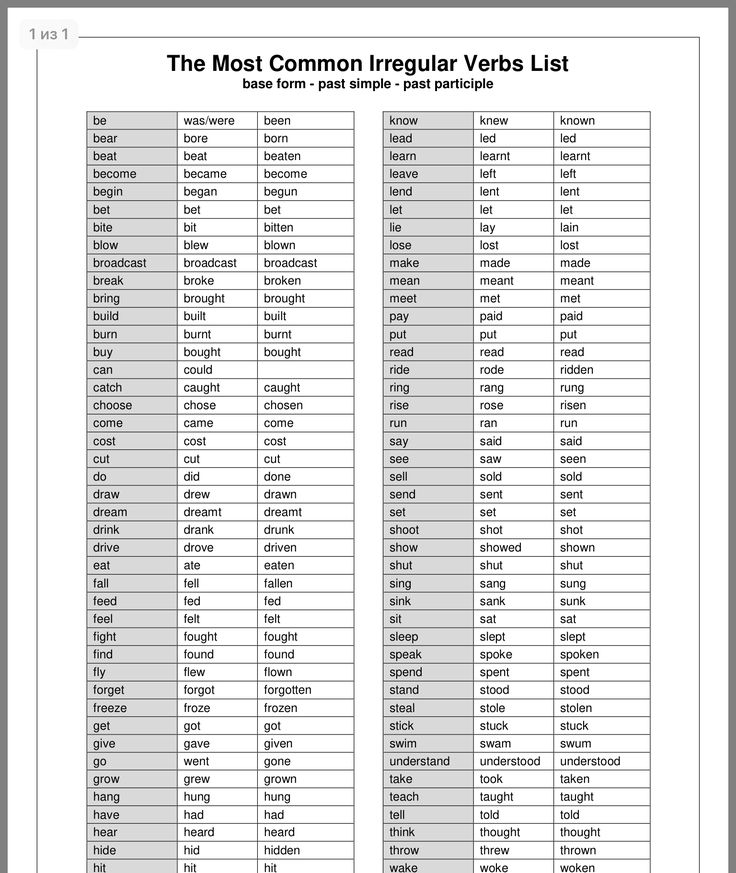 I fight, you fight, he fights, we fight, you fight. And in the third person plural it will be by analogy with "I'm fighting" - "they are fighting" with the letter "Yu".
I fight, you fight, he fights, we fight, you fight. And in the third person plural it will be by analogy with "I'm fighting" - "they are fighting" with the letter "Yu".
Correct: Let's go!
A little pain. The verb "to go" in the imperative mood has three (!) correct literate options at once: "let's go", "let's go" or "let's go". And there is also a colloquial synonymous word for "let's go", which lives only in oral speech (well, in chats). But the imperative form of the verb "send" is a gross mistake, which is better not to write or even pronounce. Never.
Correct: May the force be with you!
The Jedi (and Master Yoda, and all the heroes of Star Wars at once) looked at you very disapprovingly now. Because it is impossible to make a mistake in such an expression. And this is not about the rule "pre-" and "pri-" (unexpectedly, right?). Here again about verbs-paronyms. "To arrive" means "to approach, to come, to appear." And "to abide" - "to be, to be.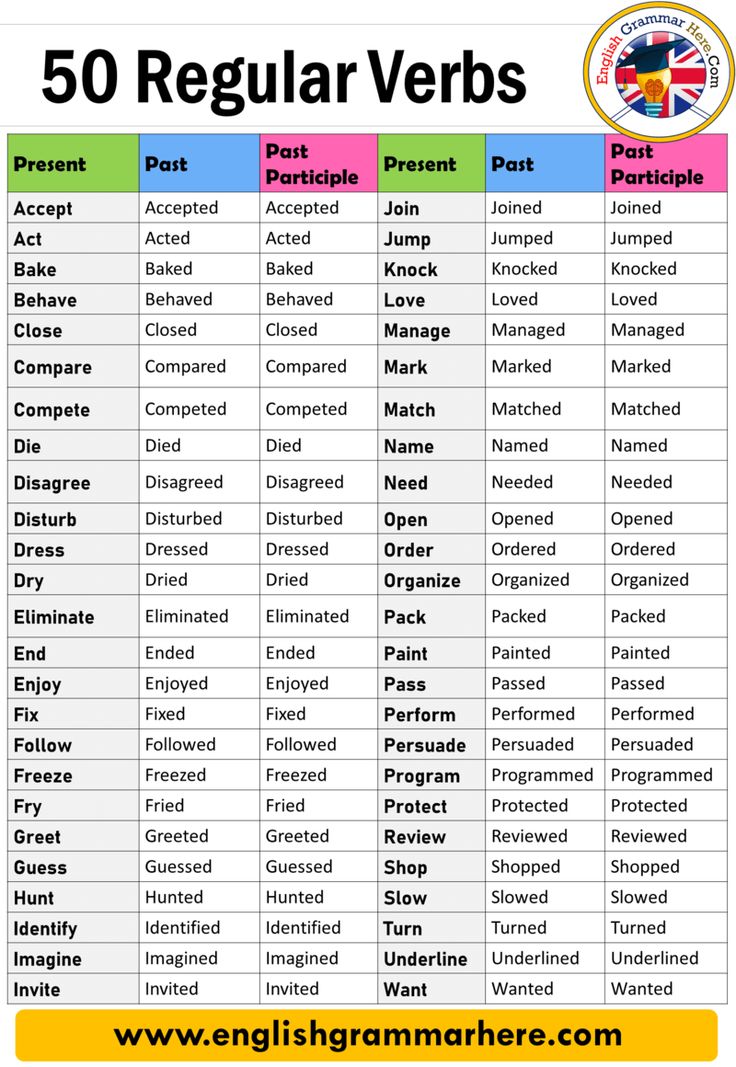 " Yes, it is quite possible to wish someone to gain strength so that they “come” to him. But then the phrase would rather sound like "may the strength come to you." In our version in the film ("May the Force be with you"), they wish you good luck and keep your strength in yourself, and not that it suddenly falls on you. Do not argue, just listen to the fans of the star saga.
" Yes, it is quite possible to wish someone to gain strength so that they “come” to him. But then the phrase would rather sound like "may the strength come to you." In our version in the film ("May the Force be with you"), they wish you good luck and keep your strength in yourself, and not that it suddenly falls on you. Do not argue, just listen to the fans of the star saga.
Correct: Children climb a rope
The verb "to climb" has a twin brother (almost) - "to climb". In many dictionaries, these verbs are equivalent. True, “climbing” has a colloquial connotation, and it is advisable to use the literary version “climbing” in writing. Just in case, let's recall the conjugation of the verb "climb": I climb, you climb, he/she climbs, we climb, you climb, and they climb. Well, or "climb" (in the third person plural of the verb "climb"). The main thing is that they don’t “climb” - this is something non-existent, it’s not worth talking like that. No way.
Correct: Gargle
Another fantasy verb in the list of irregular verbs.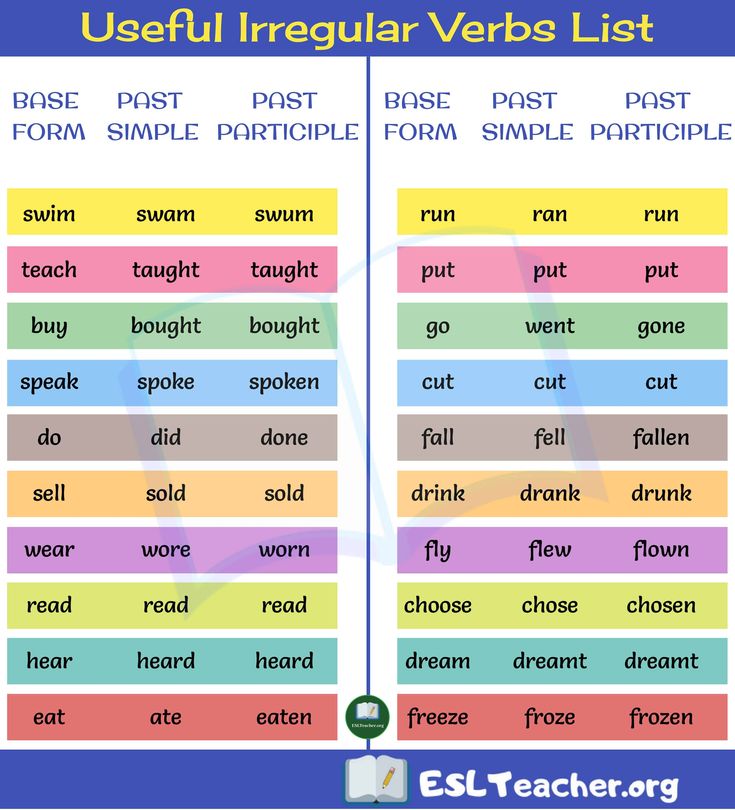 Moreover, the imperative form of this verb has so many fans that it even got into the dictionaries marked "colloquial". But if you strive to make your speech as literate as possible, your (and our) option is “rinse”.
Moreover, the imperative form of this verb has so many fans that it even got into the dictionaries marked "colloquial". But if you strive to make your speech as literate as possible, your (and our) option is “rinse”.
Correct: Put on shoes
Yes, like that. With "put on" and "put on" everyone seems to have more or less figured out (we put on ourselves, we dress someone). With shoes it's a little different. On the Internet, they even ask the question: “If you “put on” and not “dress”, then why “shoe” and not “shoe”? Firstly, the verb "to kick" still exists. Or rather, it existed. In a very distant past. But now it is considered archaic. Secondly, “put on shoes” (for yourself) is a grammatical error. And now the Russian language has its own shoe norm: put on shoes (for yourself), put shoes on - someone.
Correct: The numbers differ
“P about to be known” means to differ in something, not to coincide, not to agree. "R a to be" - to differ, to differ.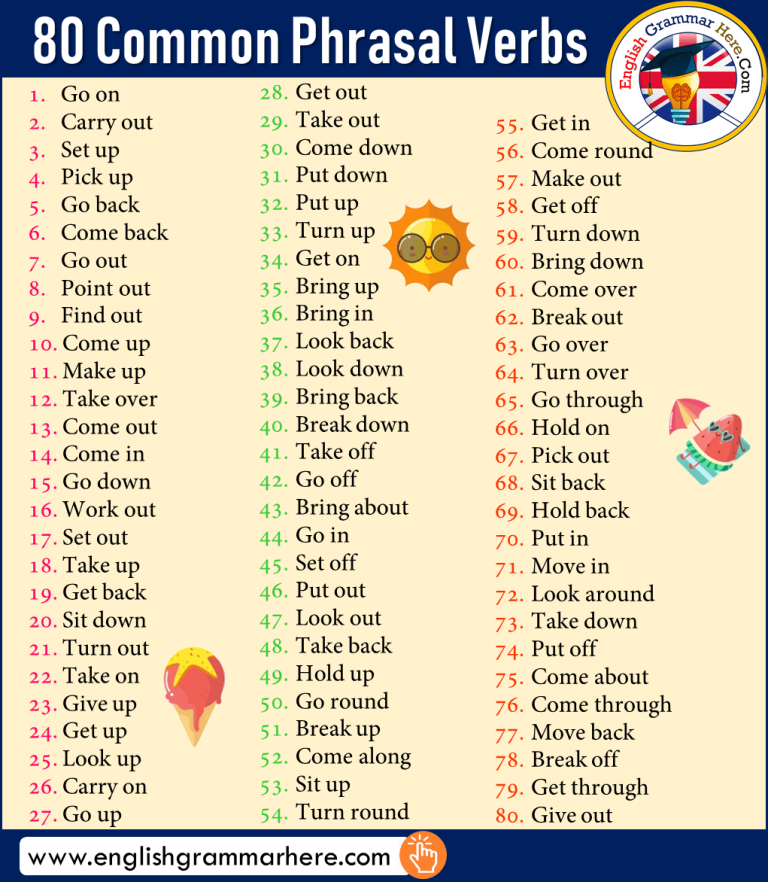 No, you don't think: the values are really similar. Now the option through "a" is considered stylistically neutral, and through "o" - outdated and colloquial. That is, our option is “to differ”. Opinions differ, numbers also differ. By the way, the stress falls on the first syllable: “to differ”.
No, you don't think: the values are really similar. Now the option through "a" is considered stylistically neutral, and through "o" - outdated and colloquial. That is, our option is “to differ”. Opinions differ, numbers also differ. By the way, the stress falls on the first syllable: “to differ”.
Correct: Razor to the ground
In fact, both verbs (paronyms) are correct, the point is in the context and in the meaning of what was said. If you mean "make something even" (level) - you need the verb "level". If we are talking about "make something equal" (compare / equalize) - writes "equalize". In general, it's simple. Exactly - equalize. Compare - compare. In our example, in the stable expression "raze to the ground", there should be no doubt, we write through "o".
Correct: I went to eat
The dispute of the century. "Eat" or "eat"? Perhaps at that moment the eyes of some readers became bloodshot at the word "eat", but in vain.